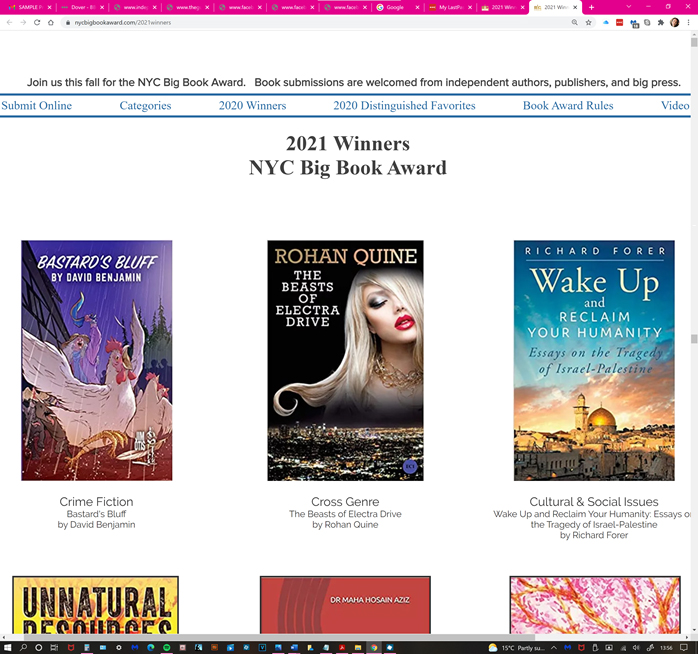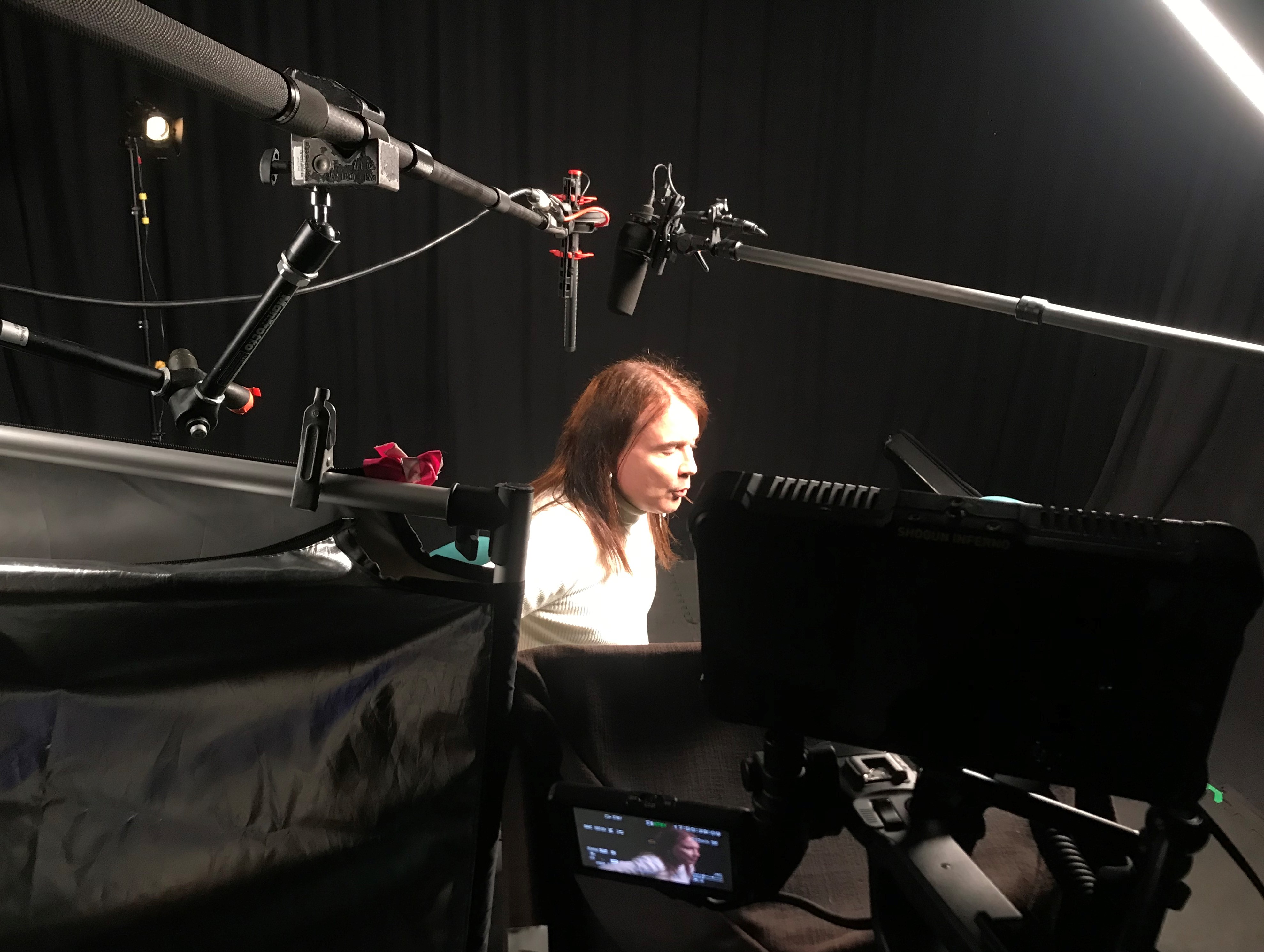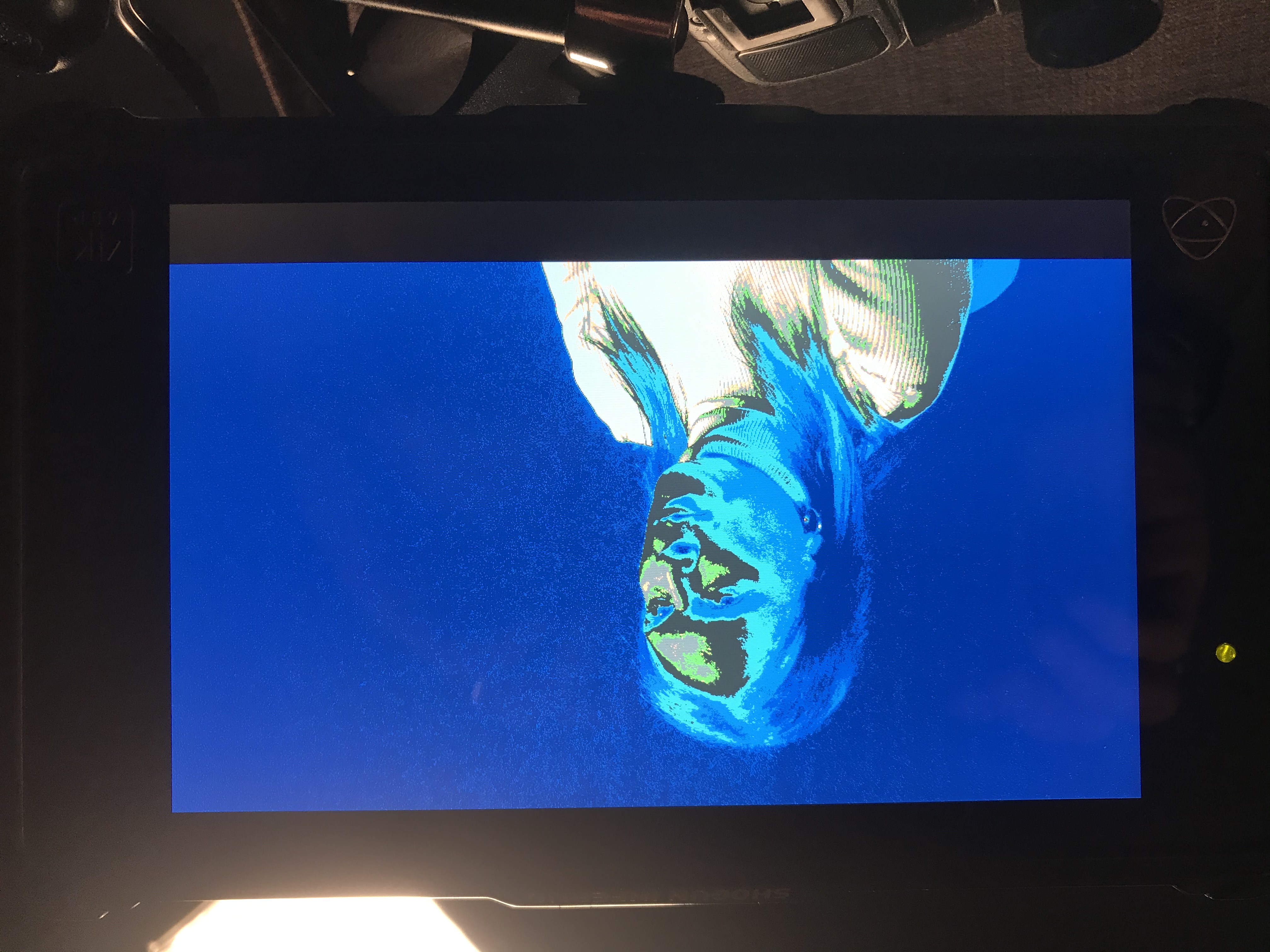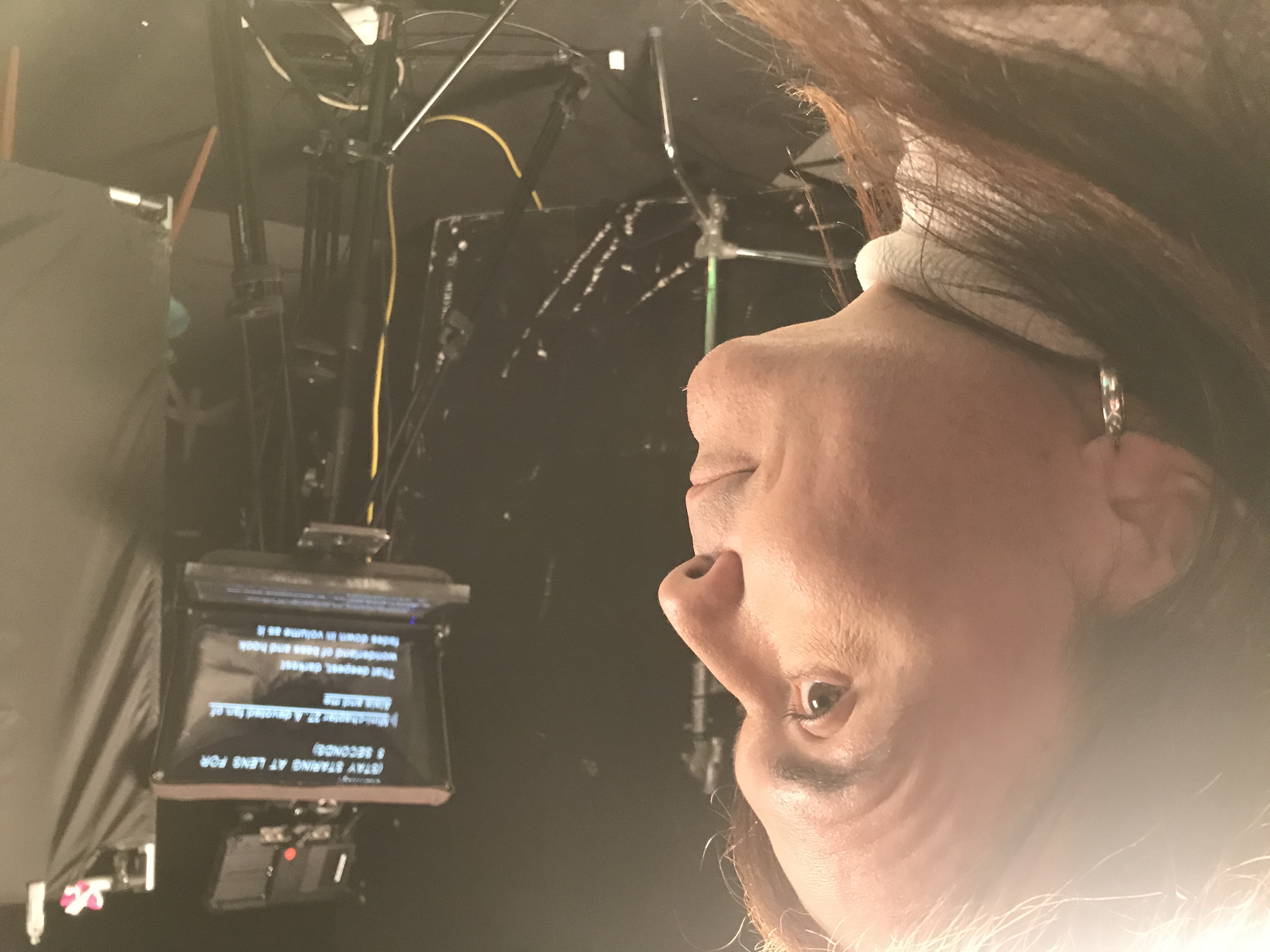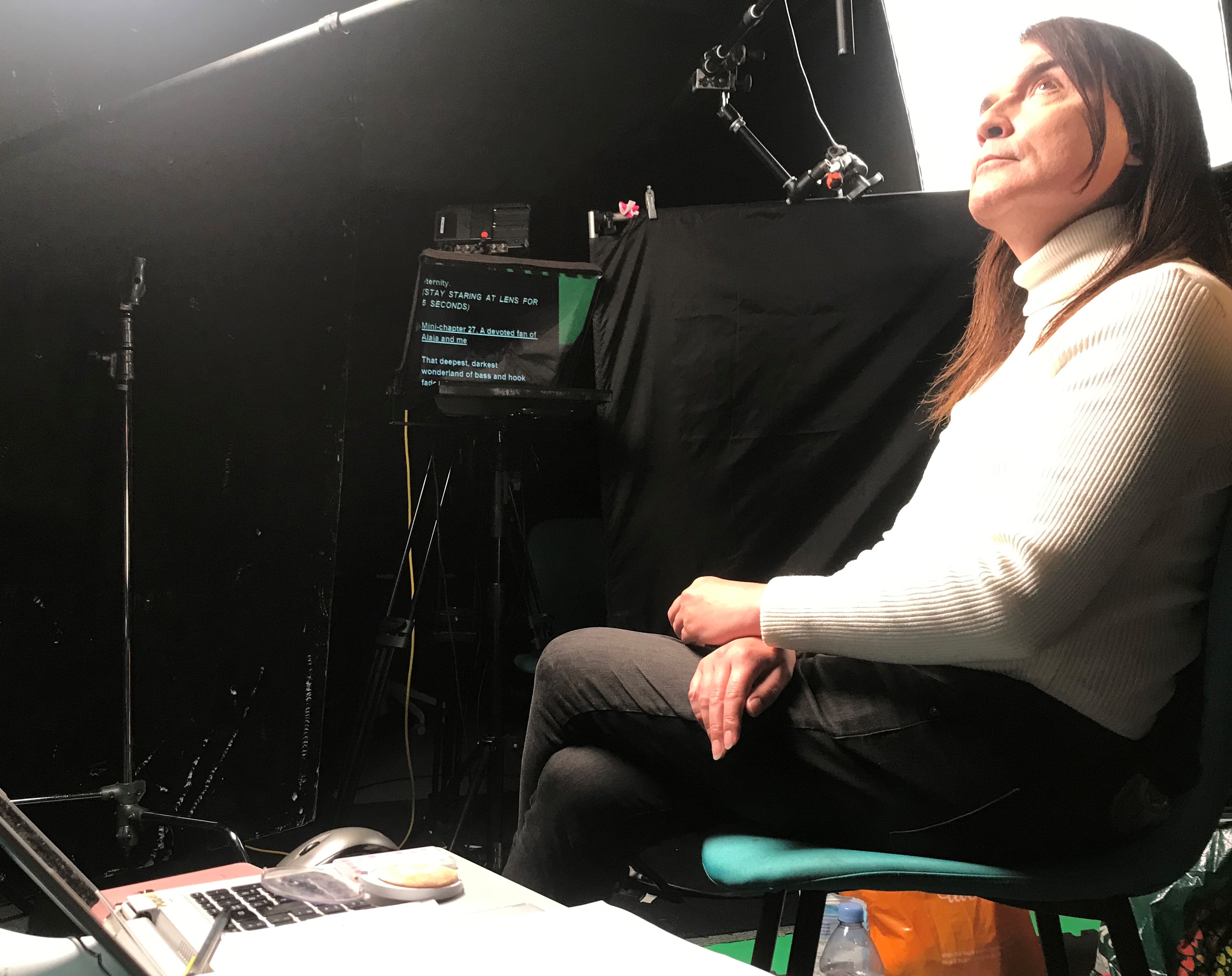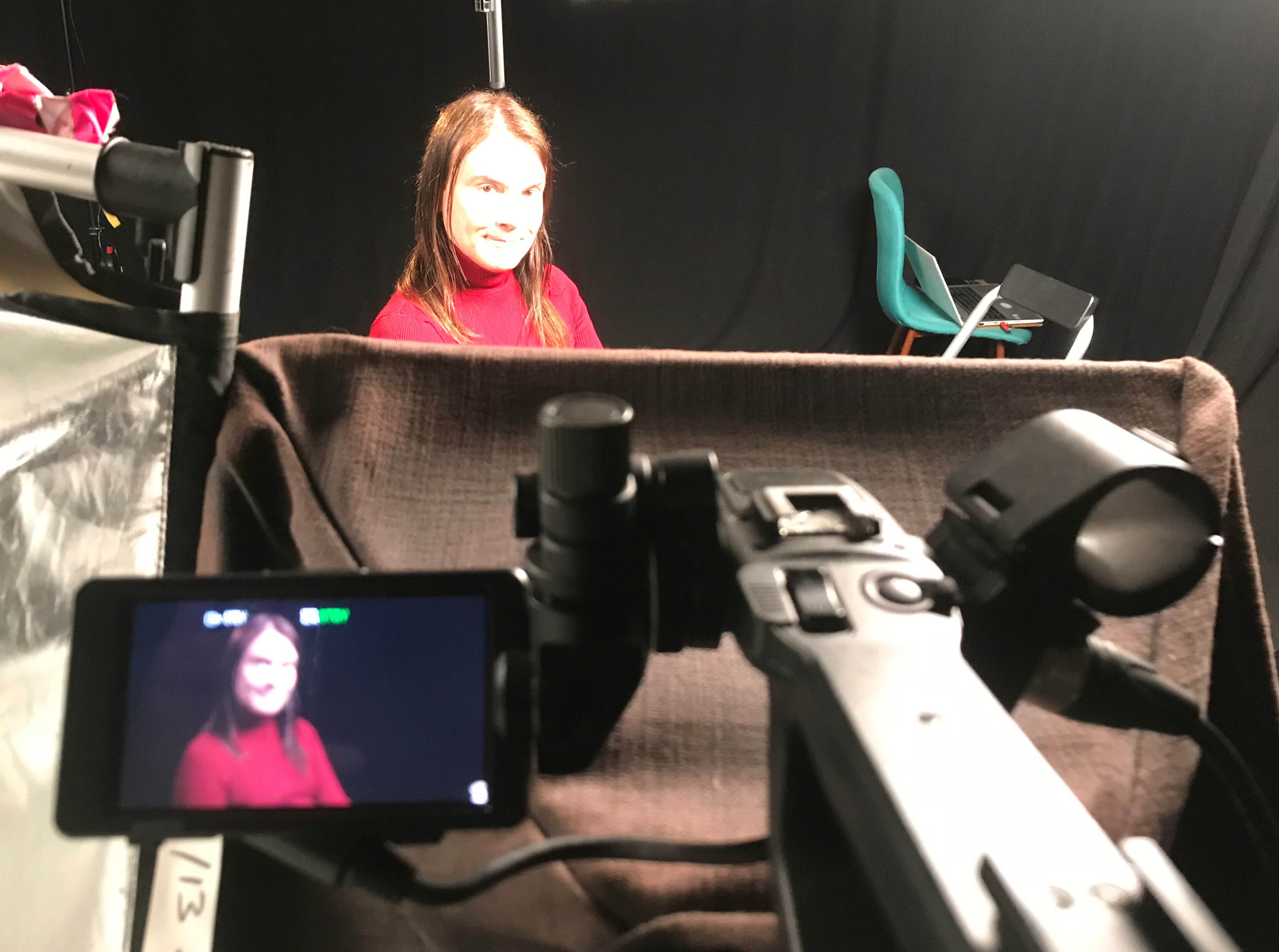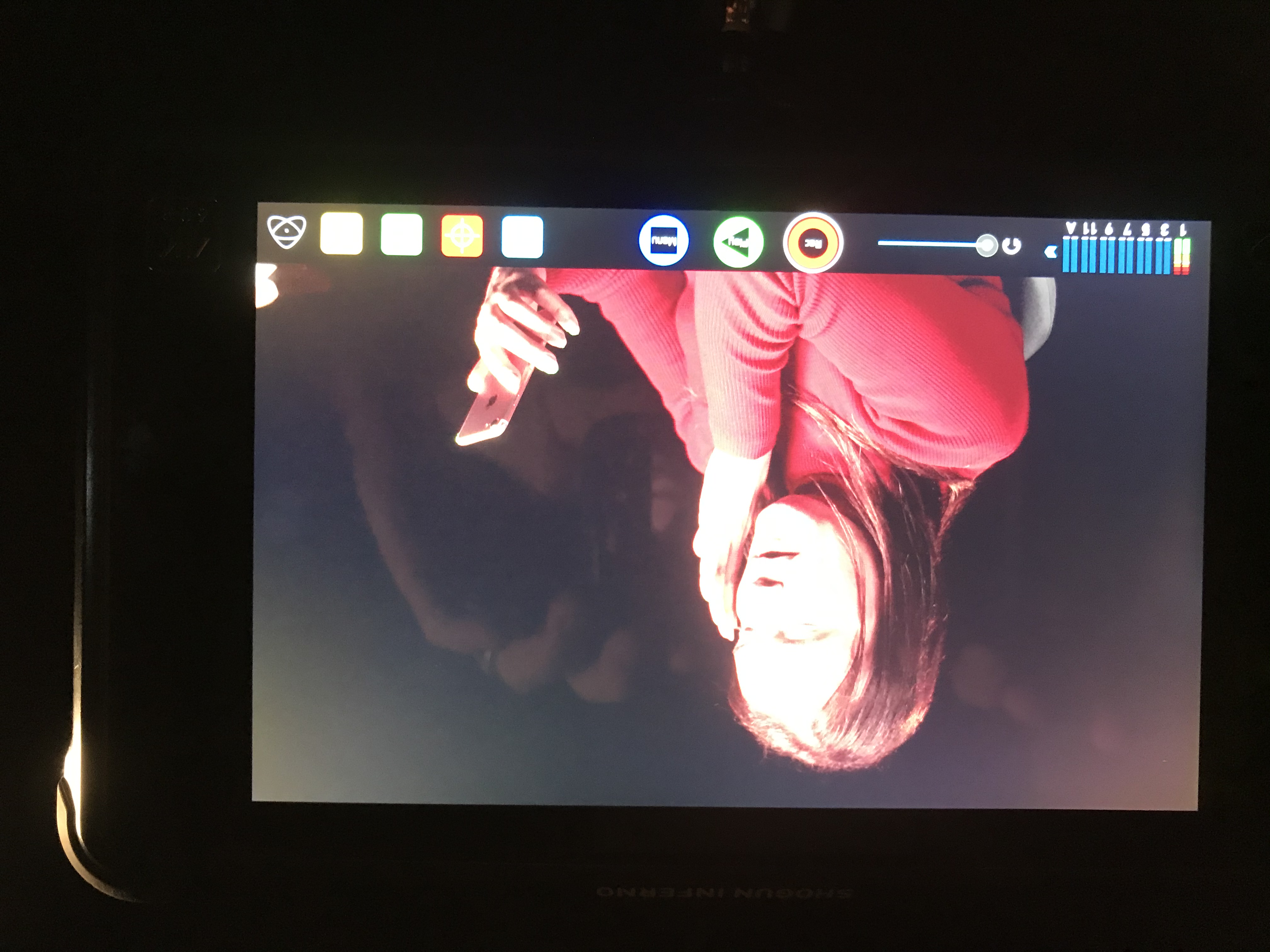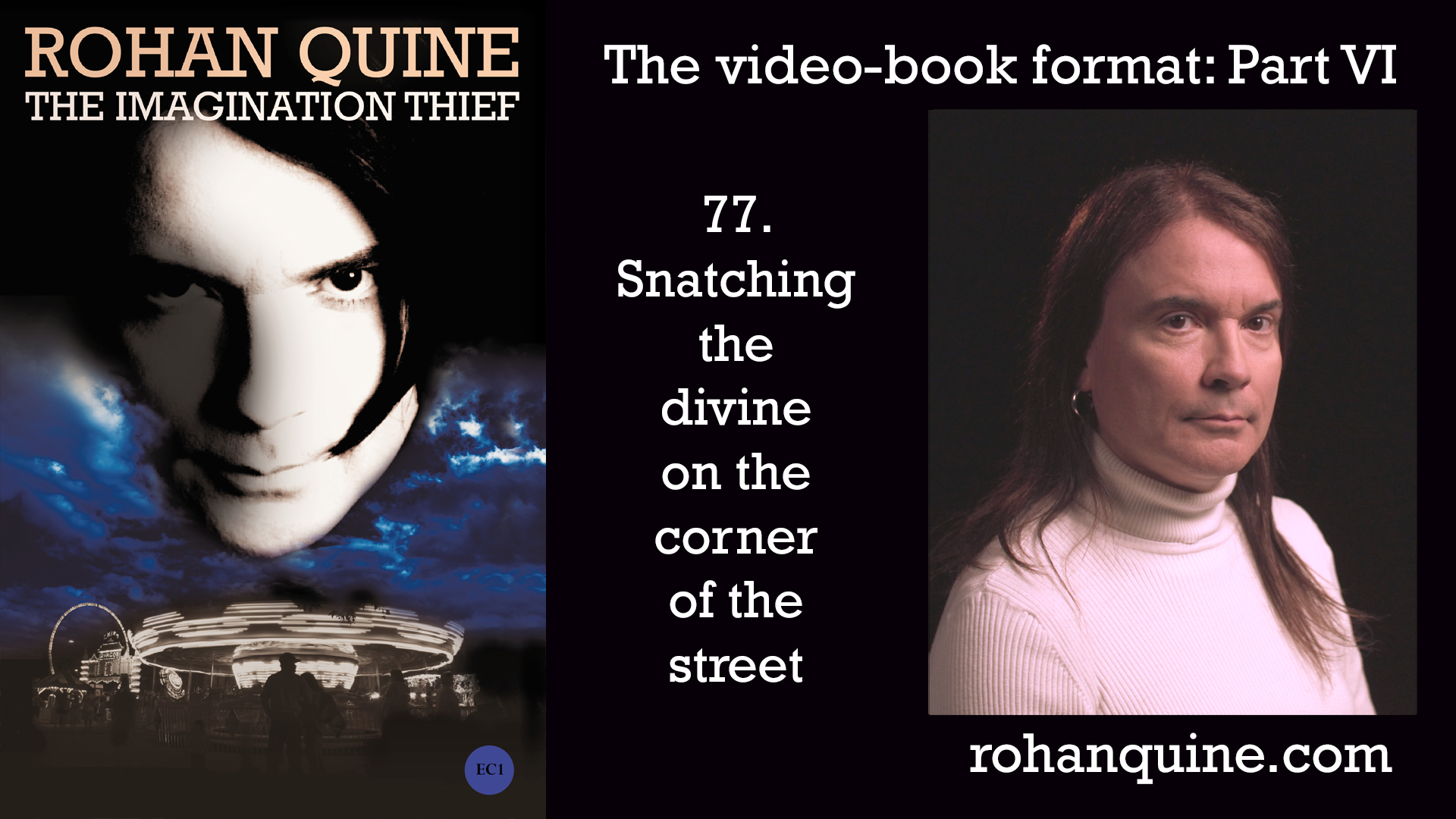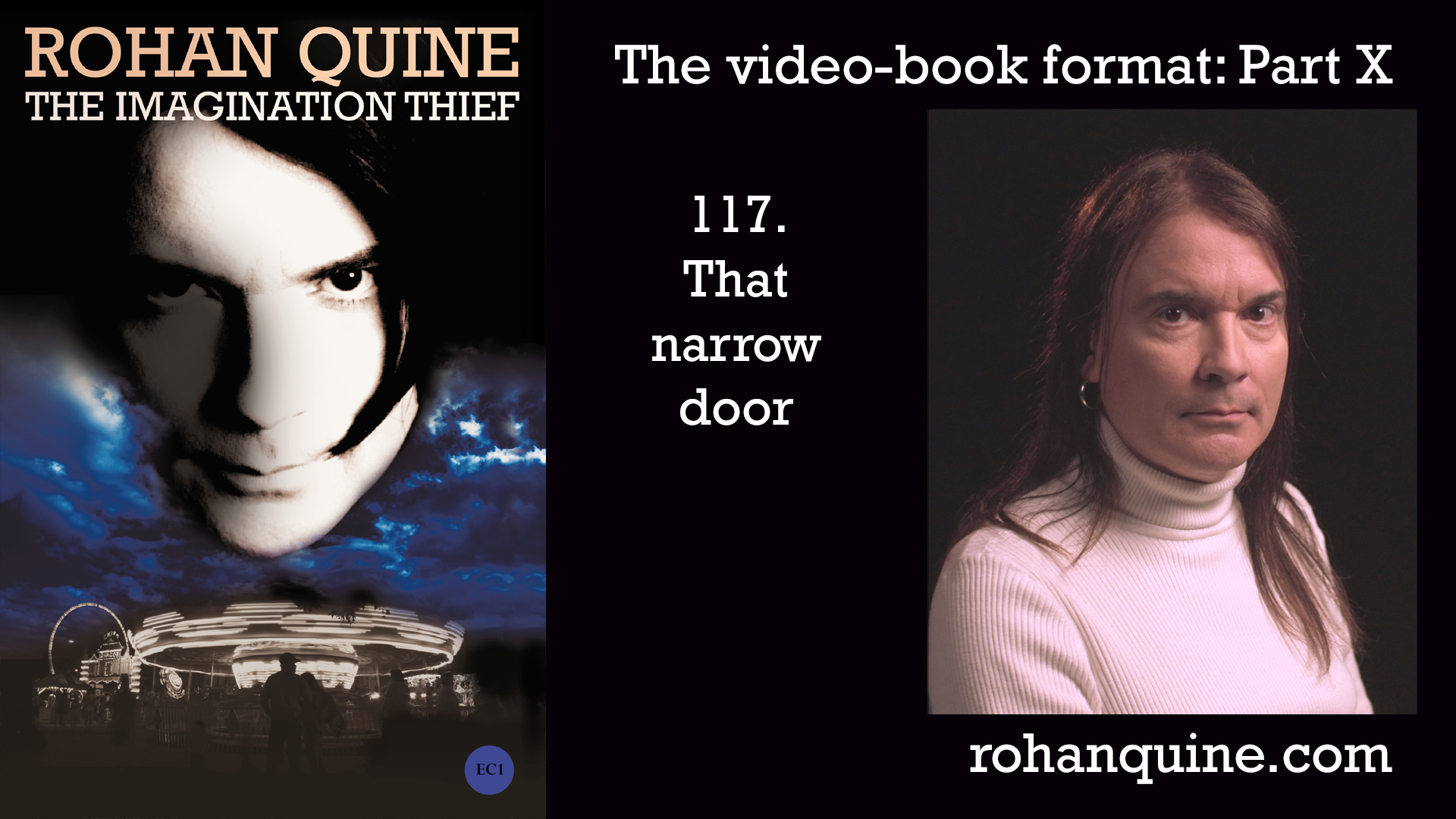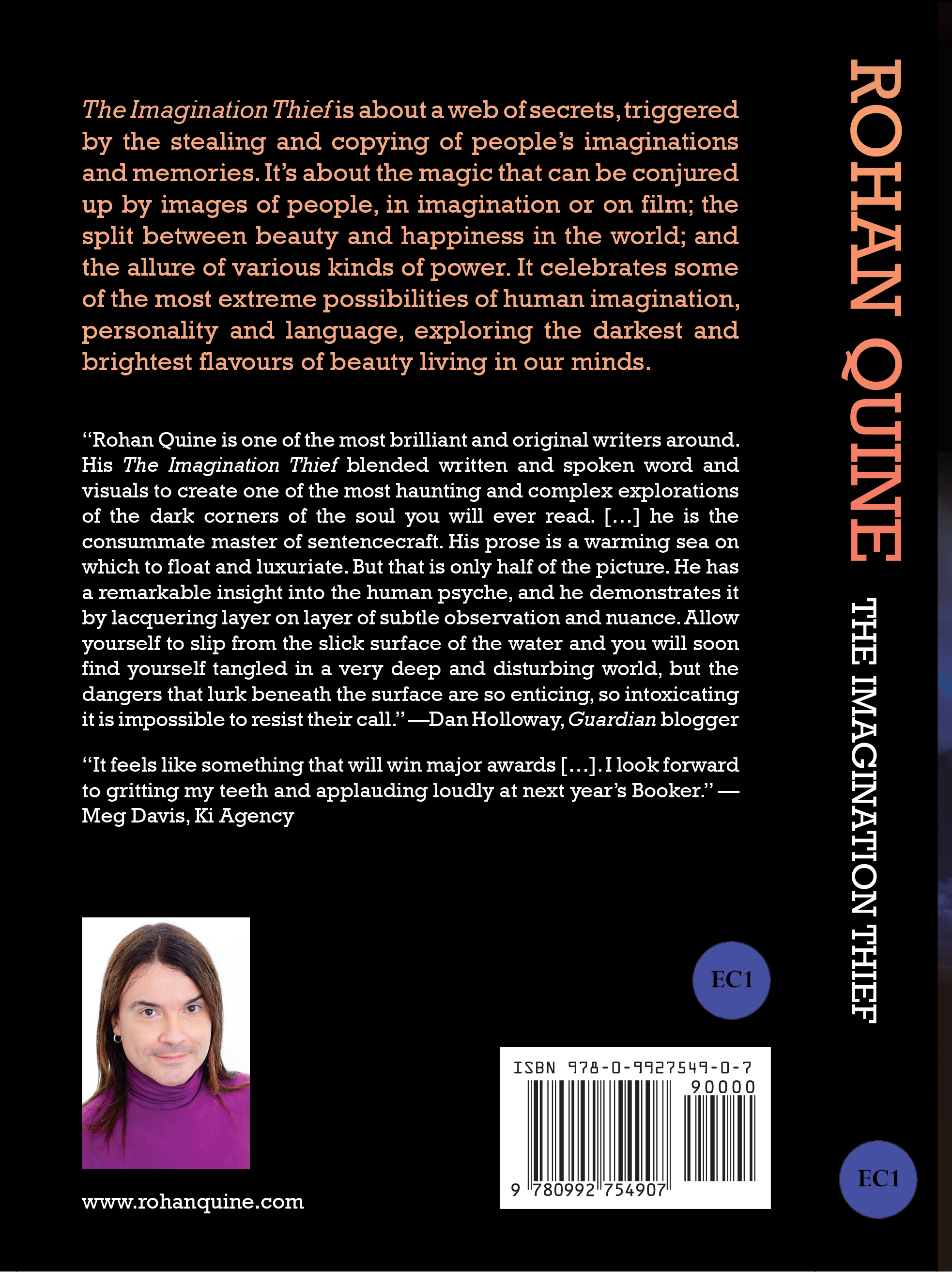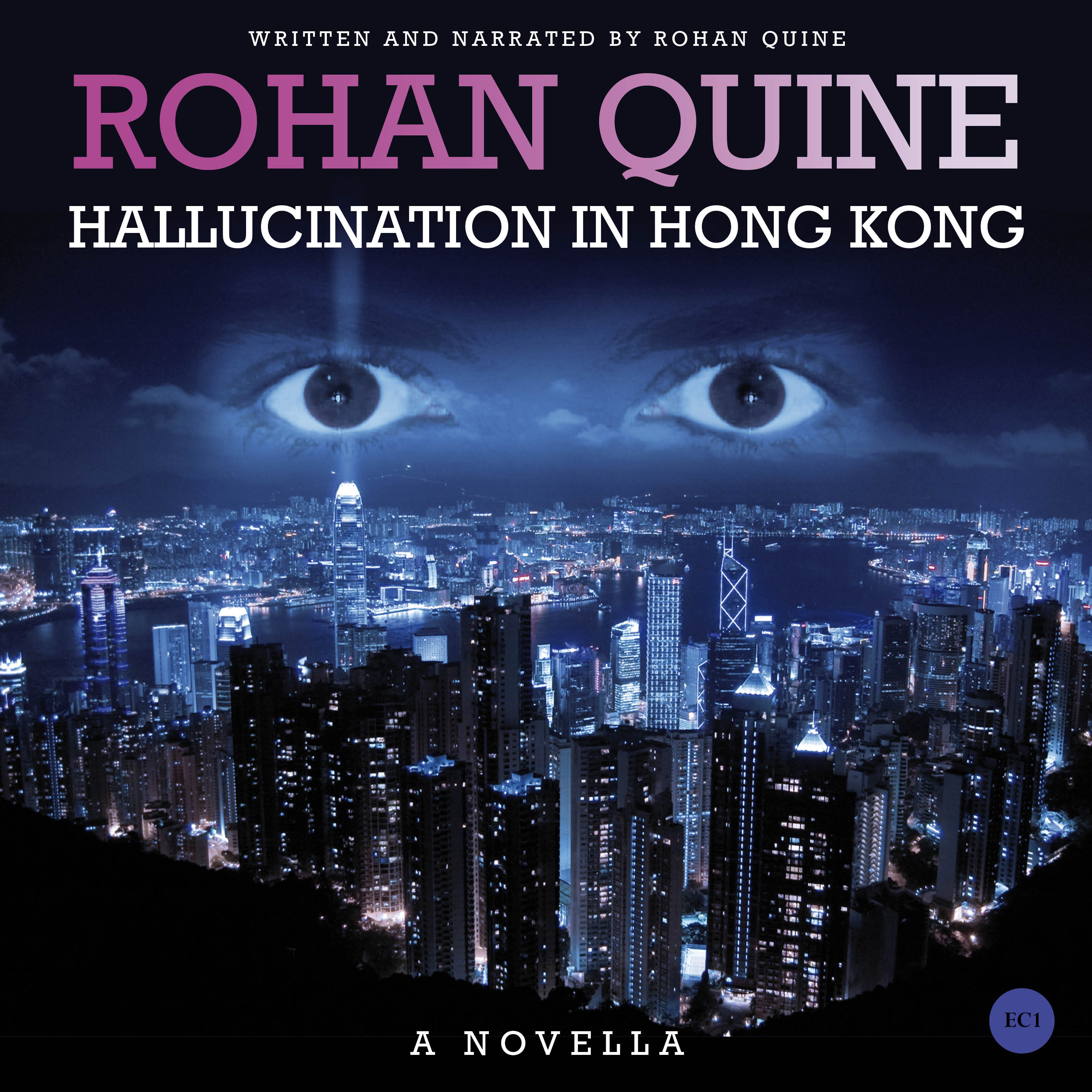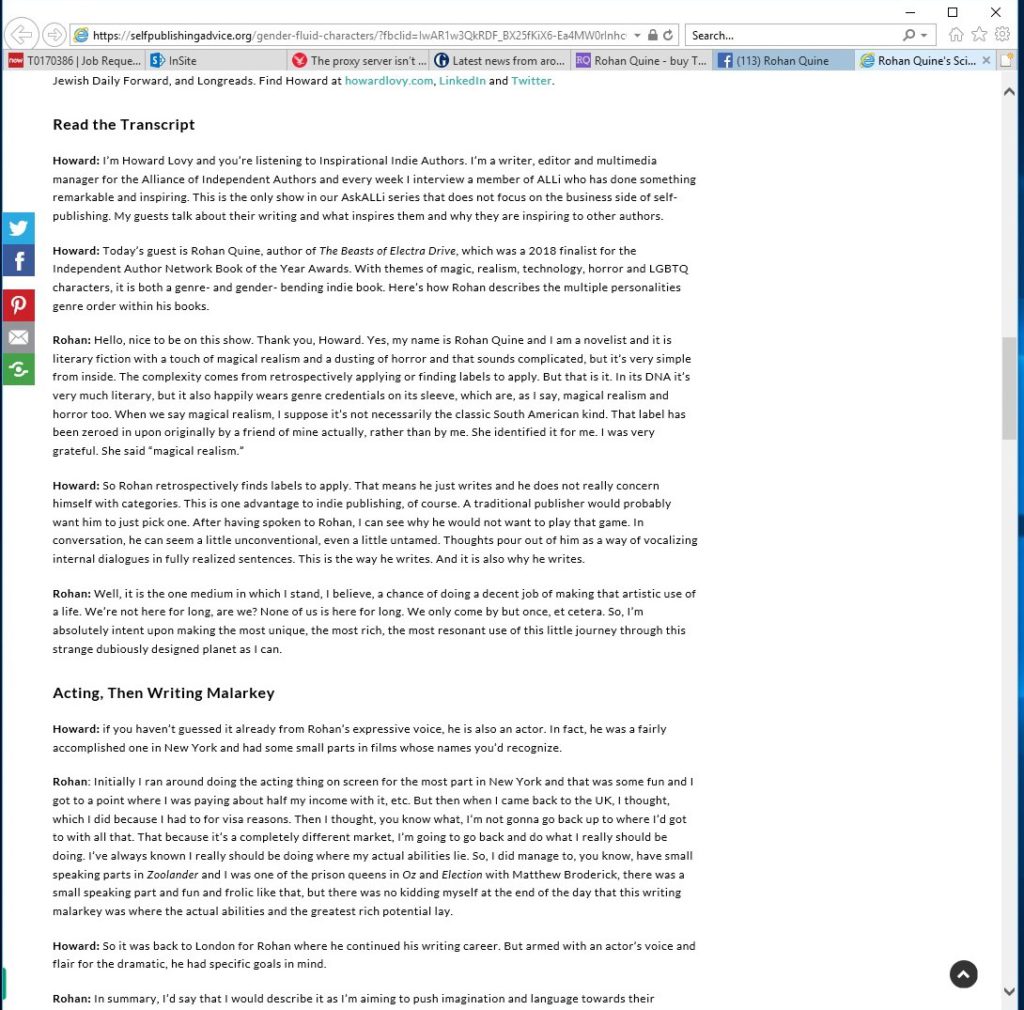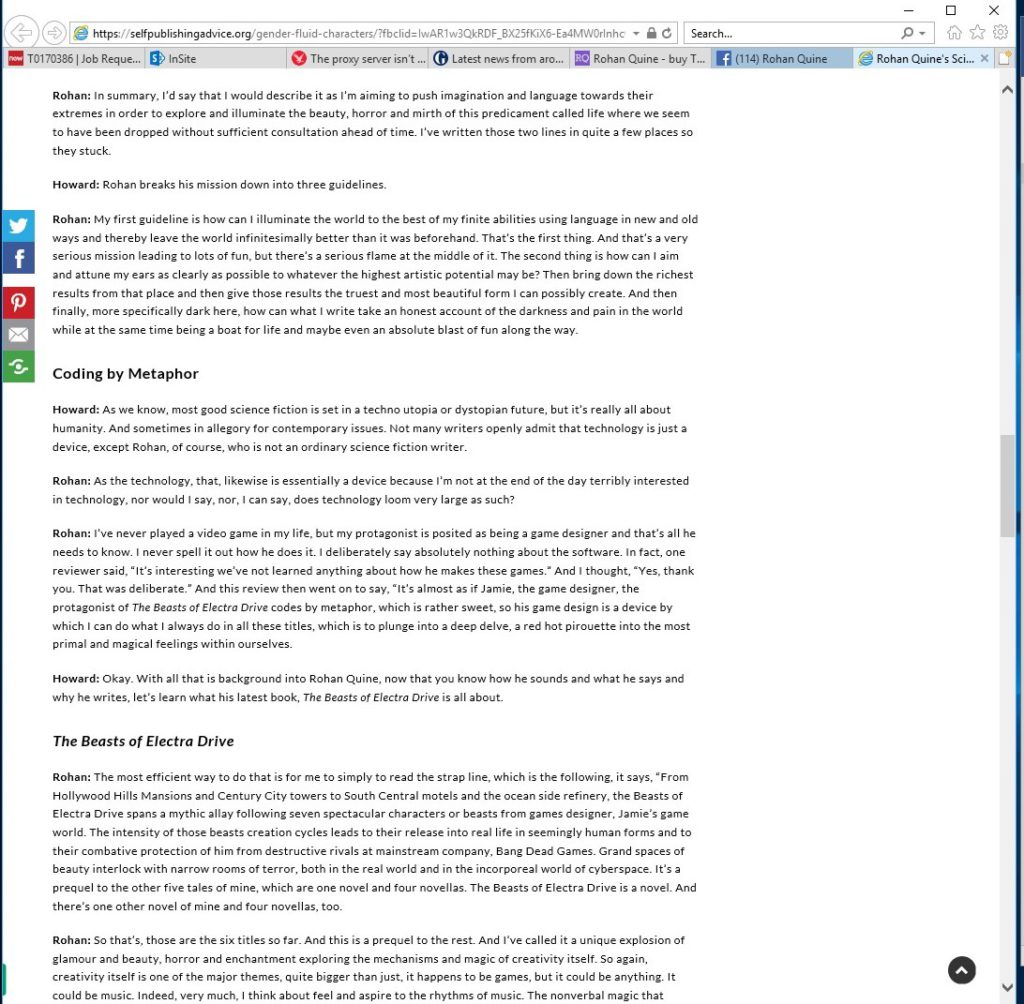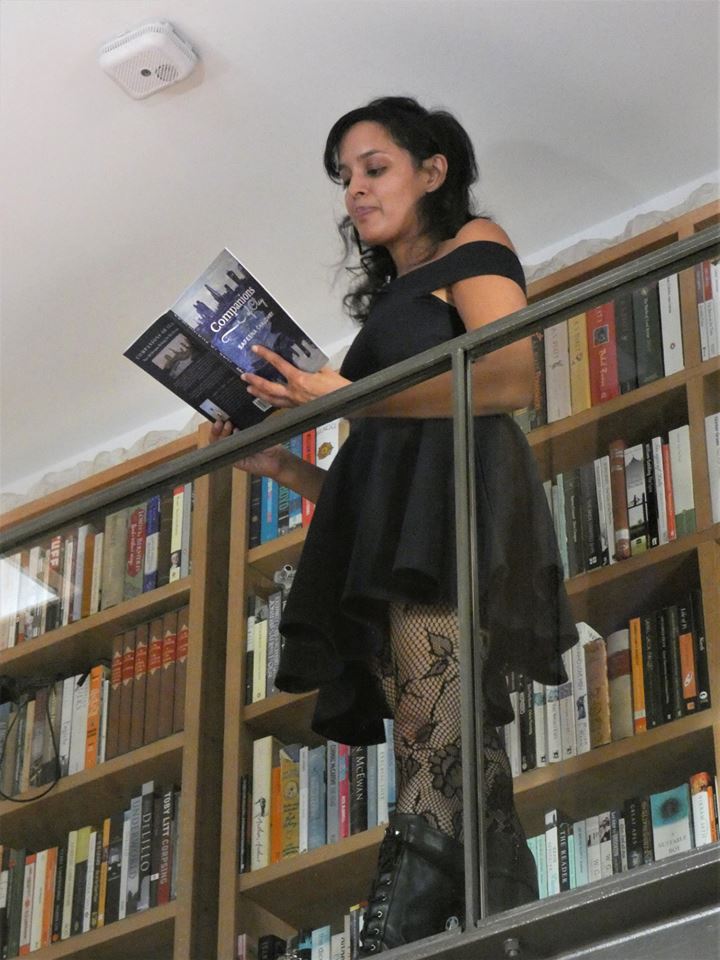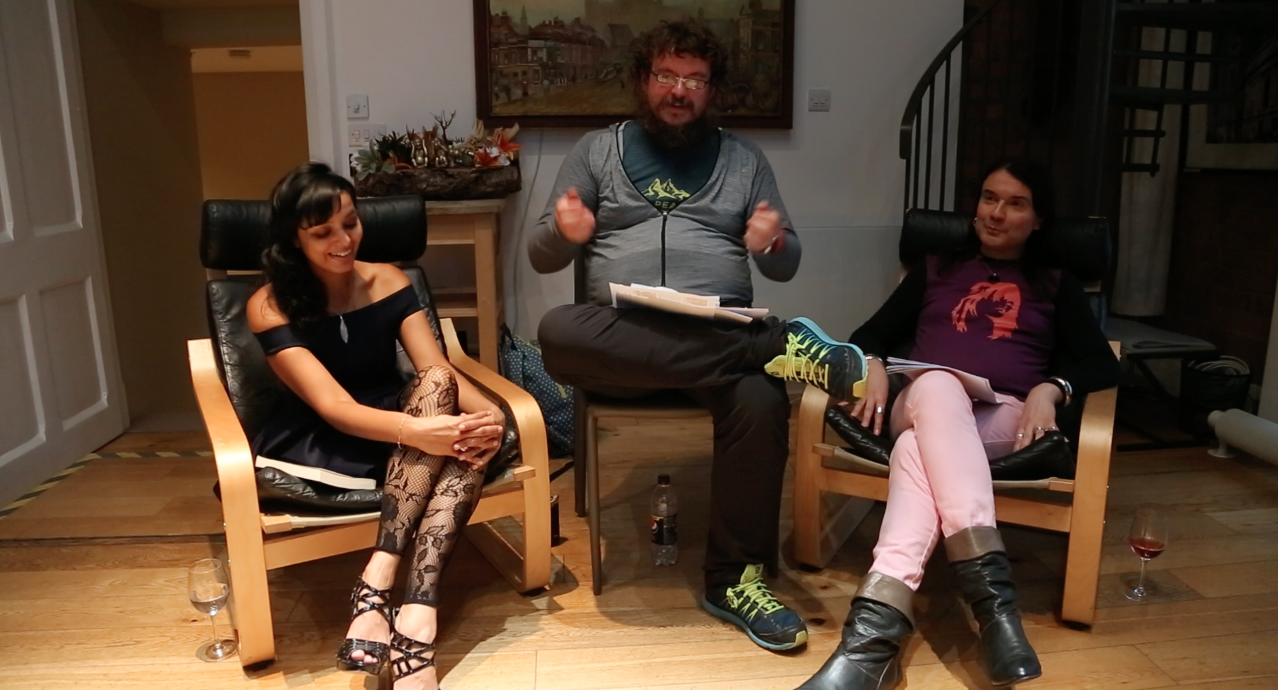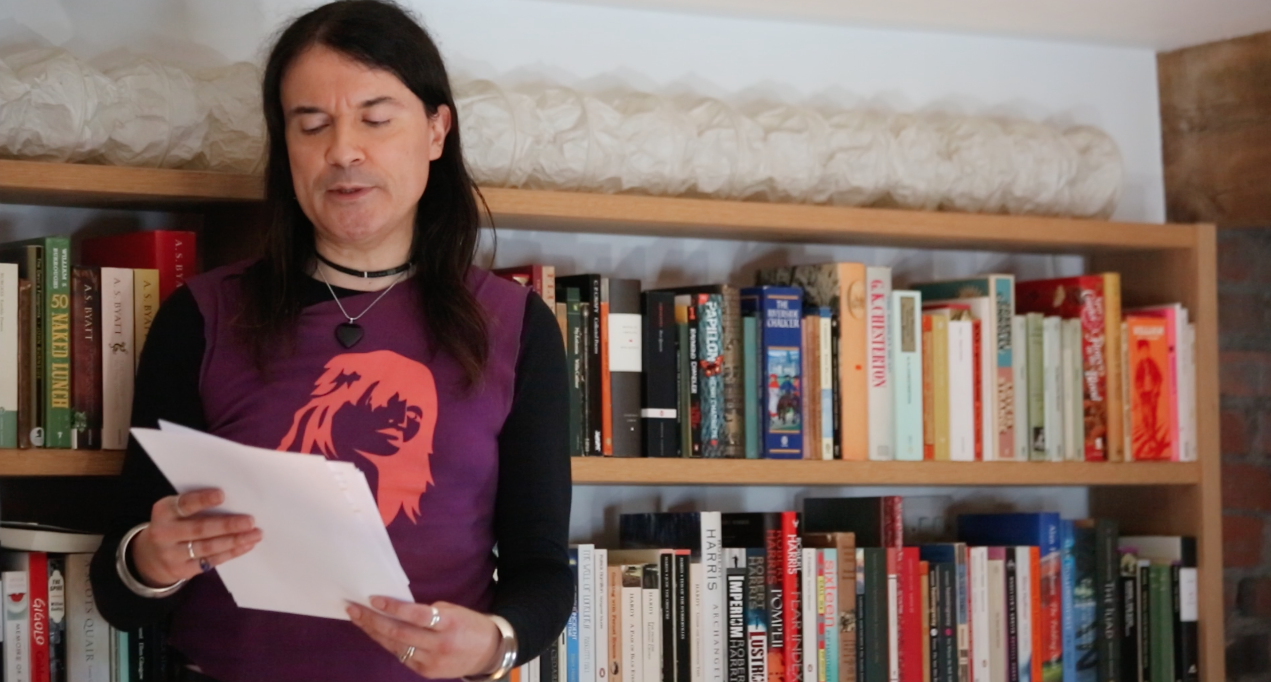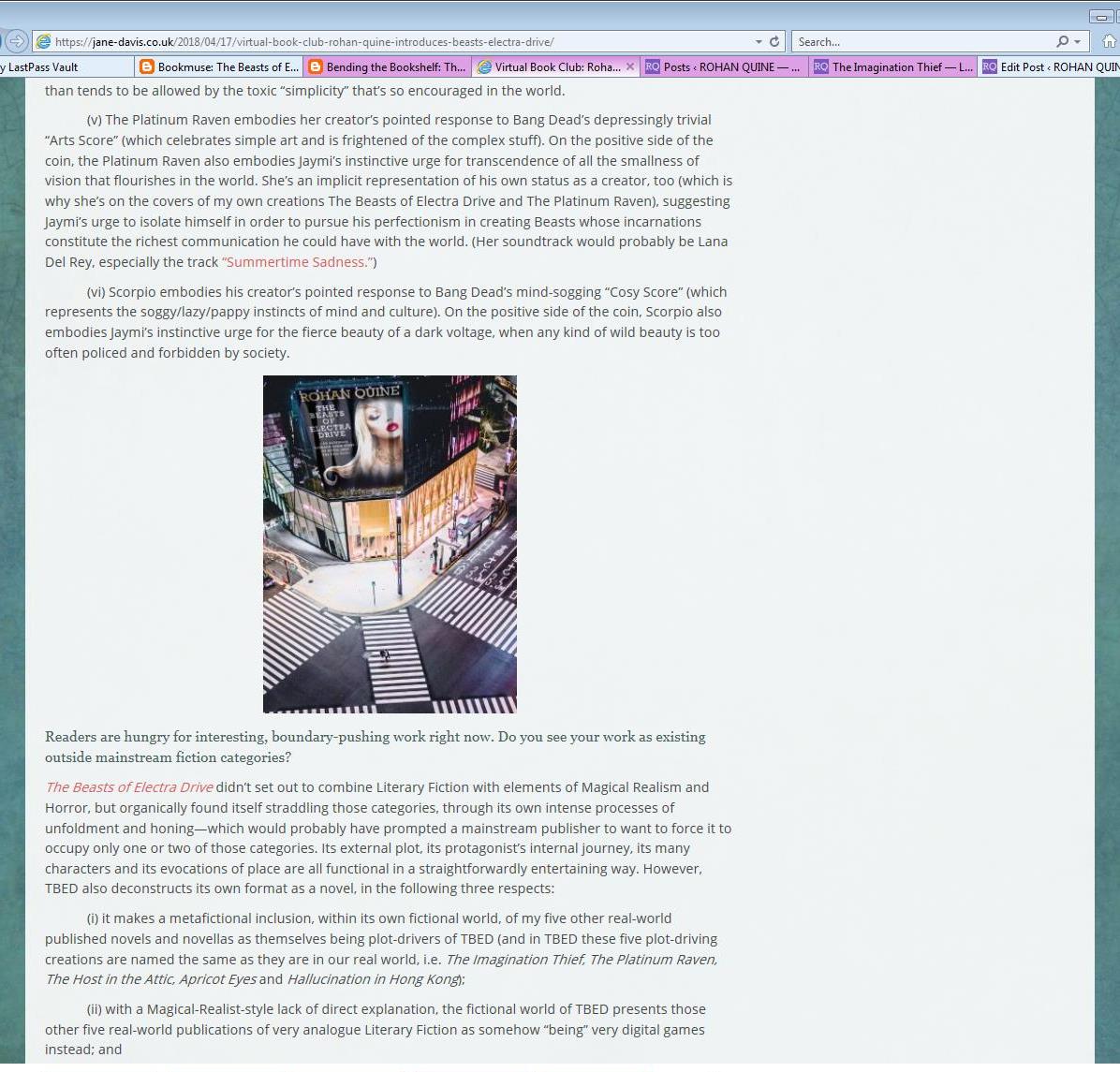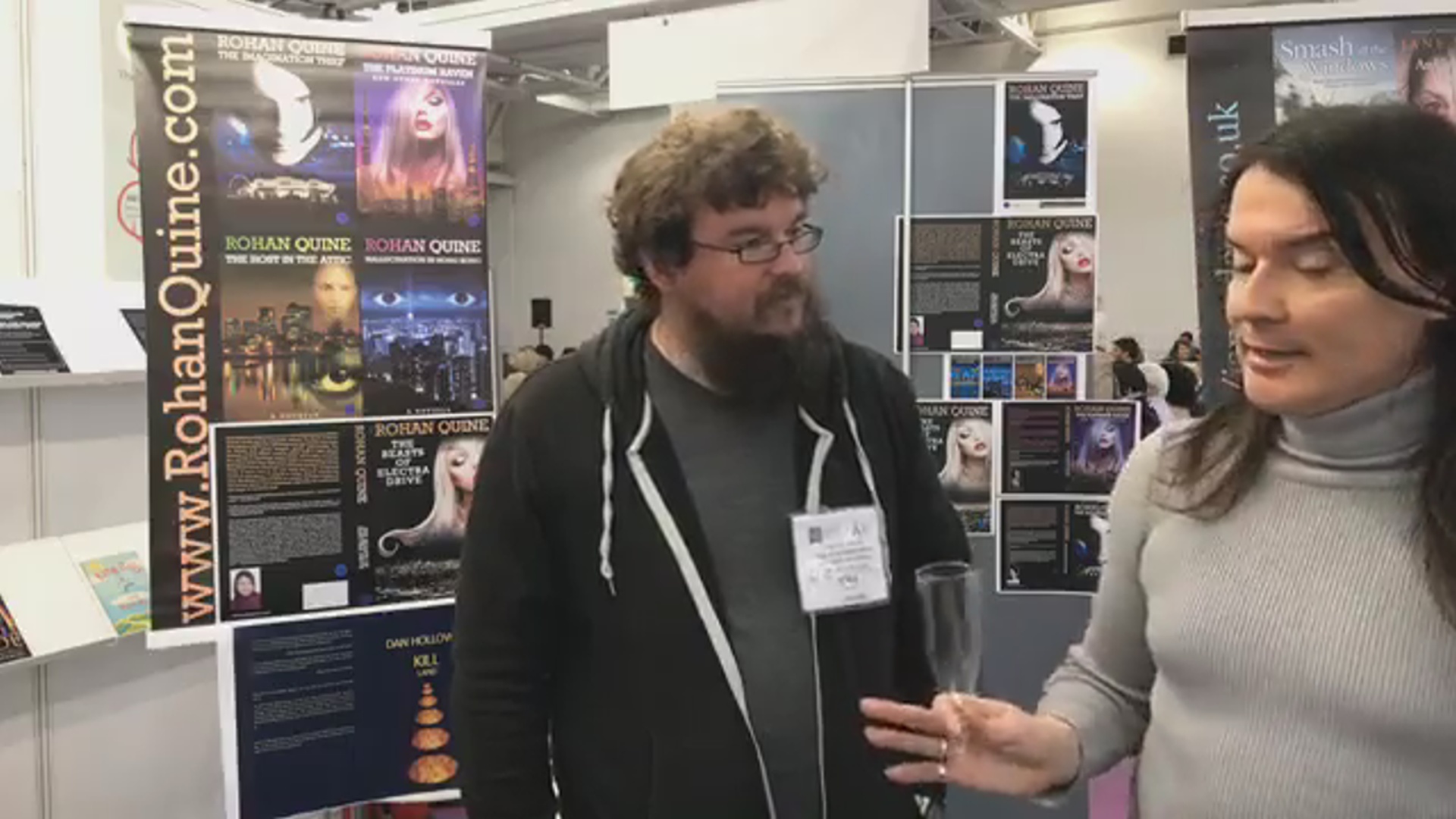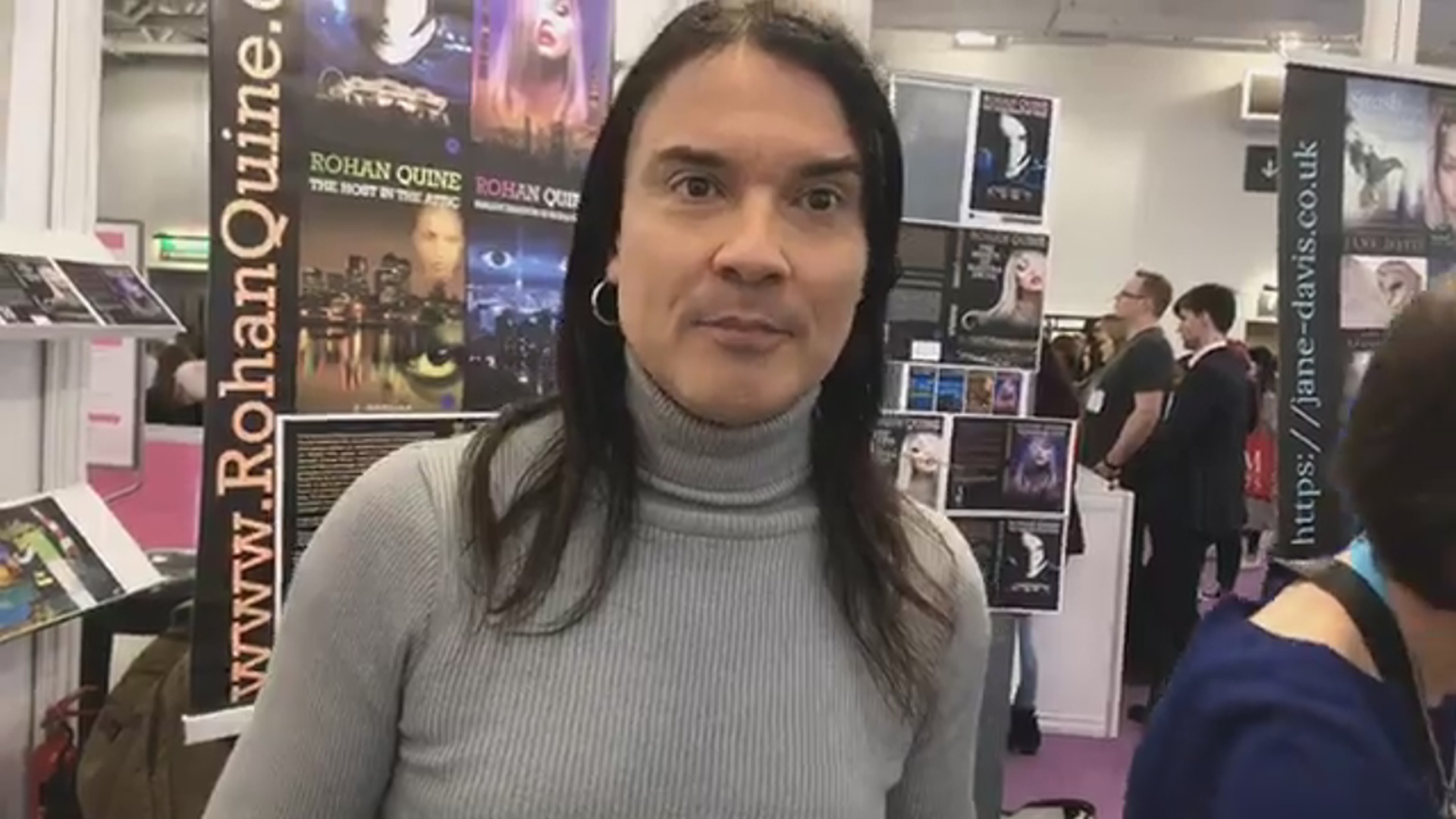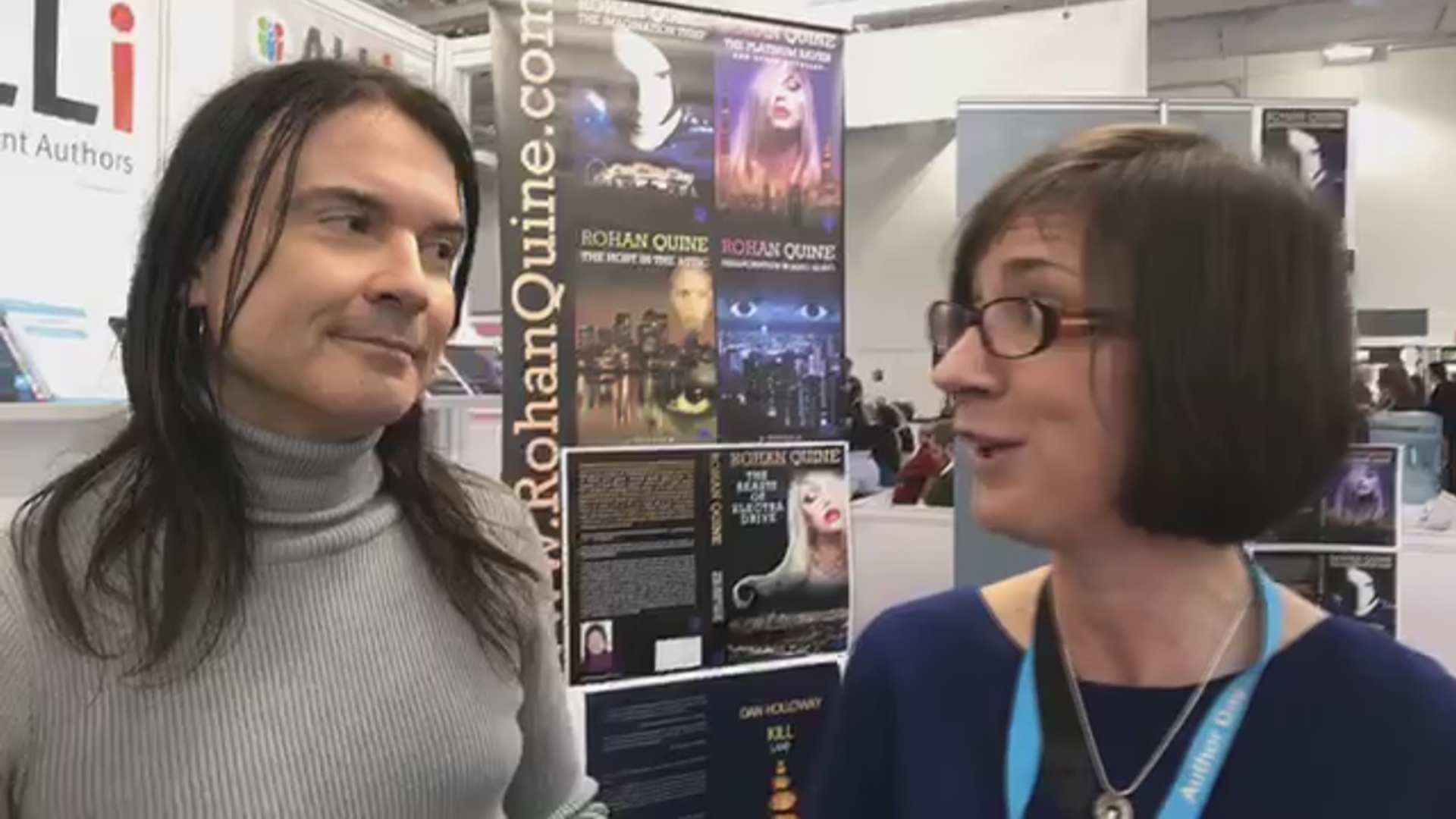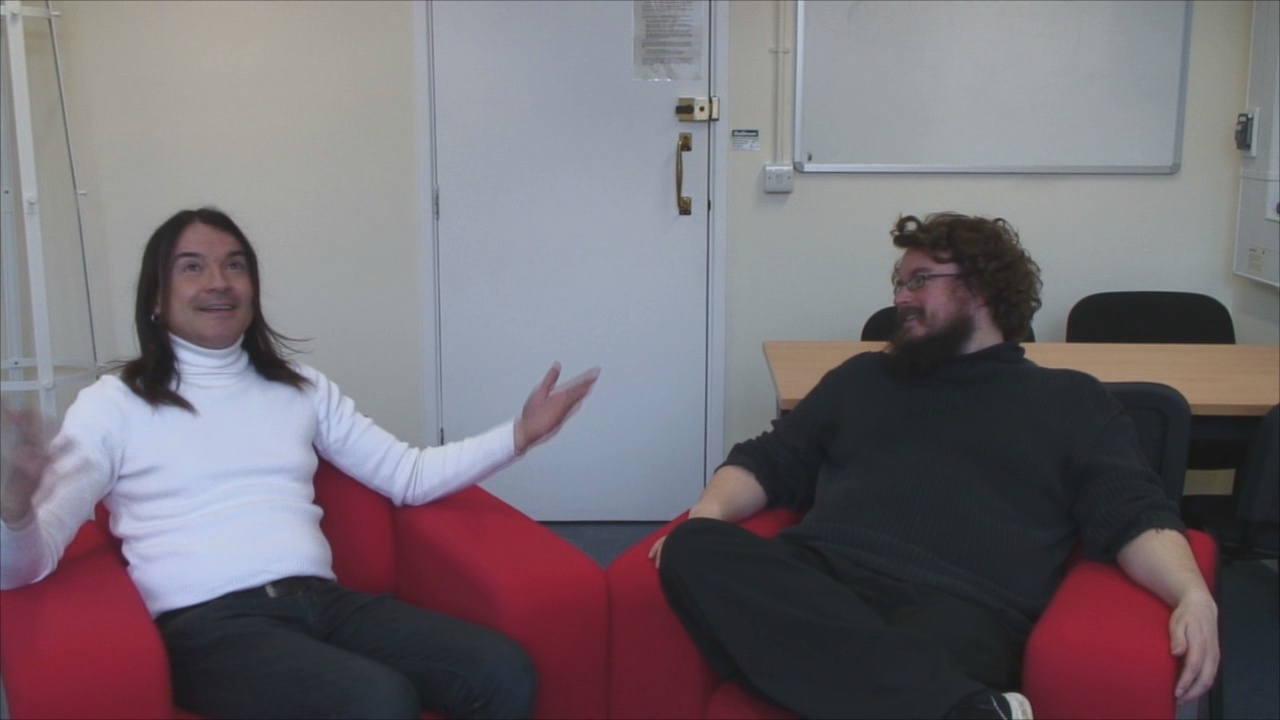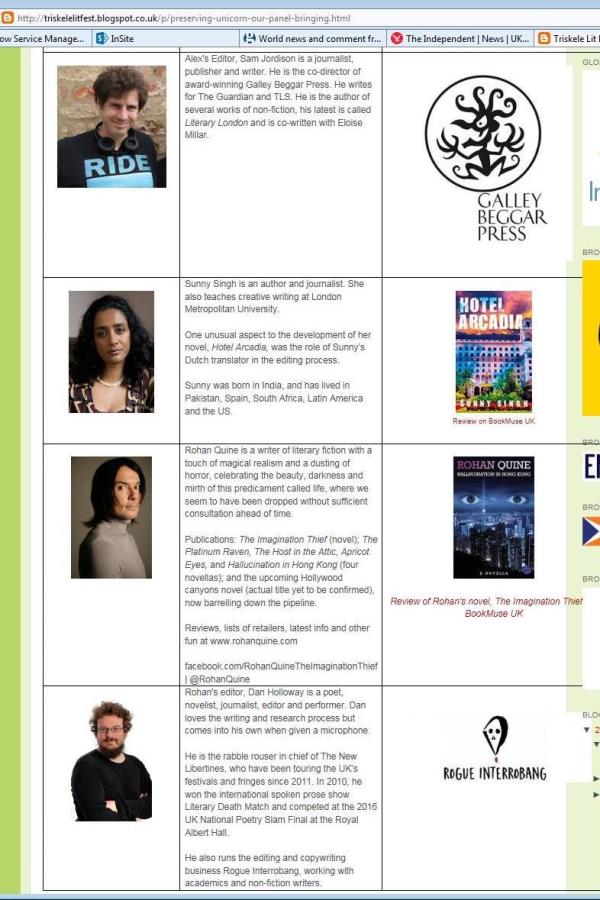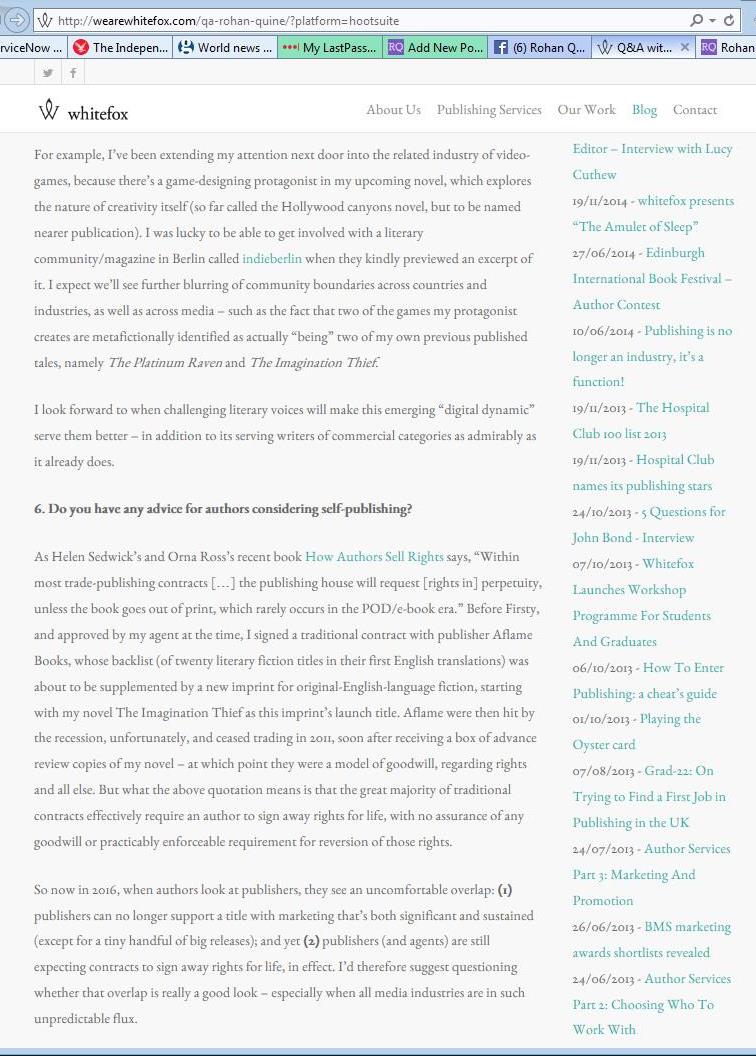LitFic
The six titles all receive accolades from the NYC Big Book Award
Glad to see my six published titles have all received accolades from the NYC Big Book Award 2021. Although it’s not restricted to the U.S., the award’s inclusion of the letters “NYC” in its name feels like an apt bit of geography, because I was a New Yorker for a decade, and NYC was where four of the six titles were partly written and three of them were started.
First, the novel The Beasts of Electra Drive is Winner in the Cross Genre category:
https://www.nycbigbookaward.com/2021winners?lightbox=dataItem-kv3o9twm4
The novel The Imagination Thief is a Distinguished Favorite in the Literary Fiction category:
https://www.nycbigbookaward.com/2021distinguishedfavorites?lightbox=dataItem-kv58kdf64
The four novellas that constitute The Platinum Raven and other novellas (namely The Platinum Raven, The Host in the Attic, Apricot Eyes and Hallucination in Hong Kong) are a Distinguished Favorite in the Anthology category:
https://www.nycbigbookaward.com/2021distinguishedfavorites?lightbox=dataItem-kv58kdcn
And The Beasts of Electra Drive‘s audiobook format, which I narrated, is also a Distinguished Favorite in the Audiobook-Fiction category:
https://www.nycbigbookaward.com/2021distinguishedfavorites?lightbox=dataItem-kv58kdcn2
The full listings are at:
https://www.nycbigbookaward.com/2021winners
https://www.nycbigbookaward.com/2021distinguishedfavorites
Photos from the recording of The Imagination Thief’s video-book format
It was fun to return to the fuzzy-booth lifestyle, to record the video-book format of The Imagination Thief, whose audio track provided the novel’s recently-published first audiobook edition.
The video-camera only looked in one direction, to create the video-book that lives at
www.rohanquine.com/t-i-t-video-book
and the short-‘n’-snackable teasers from it (some less than a minute long), which live at
www.rohanquine.com/t-i-t-video-book/short-teasers-for-the-imagination-thief-video-book
But the following photos bring back memories of what was off-video-camera, around me in that cosy den whose walls were hung with black drapes and echo-banishing fuzzy black foam, sealed off from reality in a bubble of language and spotlight for hours, hidden away like a rabbit in its basement bedroom at the furthest end of a warren.
(The first 11 and the last five photos are by Paul Lucas.)
Video-book format and audiobook format of The Imagination Thief are released
It was great fun to perform the full text of The Imagination Thief recently, reading to camera through an autocue, with spongy walls of off-camera foam on either side of me. The resultant audiobook format of the novel is just starting to appear at the first few audiobook retailers, like a little dark orchid, as listed here:
www.rohanquine.com/buy/the-imagination-thief-novel-audiobook
The resultant video-book format of the novel is free to watch at:
www.rohanquine.com/t-i-t-video-book
And for some short-’n’-snackable teasers from the above (some of the teasers being less than a minute long), see here:
www.rohanquine.com/t-i-t-video-book/short-teasers-for-the-imagination-thief-video-book
The video-book and audiobook formats both resulted from the same recording, and are both complete and unabridged versions of the novel, with the same text as in the paperback and ebook formats.
For general juice and sugar about The Imagination Thief, see here.
For some great reviews of it, see here.
Links to the retailers of all the formats of the novel are here.
The Imagination Thief by Rohan Quine is about a web of secrets, triggered by the stealing and copying of people’s imaginations and memories. It’s about the magic that can be conjured up by images of people, in imagination or on film; the split between beauty and happiness in the world; and the allure of various kinds of power. It celebrates some of the most extreme possibilities of human imagination, personality and language, exploring the darkest and brightest flavours of beauty living in our minds.
2013 novel The Imagination Thief is gratefully chuffed to be included in a “best of the decade” list of six titles chosen by Dan Holloway
My 2013 novel The Imagination Thief is gratefully chuffed to be included in a “best of the decade” list of six titles chosen by Dan Holloway:
https://twitter.com/agnieszkasshoes/status/1210678118421323776
Part of the chuffingness results from the fact that Dan is alarmingly well-read in a grand array of literary genres and academic fields—his three Gold medals as Creative Thinking World Champion in the Mind Sports Olympiad in each of 2019 & 2017 & 2016, as well as his three Gold medals as Speed Reading World Champion in the same Olympiad in 2019 & 2018 & 2017, being just six visible cherries atop the wider Bakewell Tart of his various brilliant literary and activist and wicked-problem-solving works.
Being about to begin writing the seventh tale (a novel) next week at the very start of the ’Twenties, I’m very grateful to have received such supportive input from Dan throughout the ’Teens, ever since his generous 2013 review in The Guardian of my first tale The Imagination Thief and his generously detailed interview about that same novel at his eight cuts gallery.
For some nice reviews of The Imagination Thief, click here.
To see what The Imagination Thief is about, click here.
For some of the main talking points that stem from The Imagination Thief, see here.
Buy The Imagination Thief in paperback or ebook format.
Front cover of paperback of The Imagination Thief
Back cover of paperback of The Imagination Thief
Full cover of paperback of The Imagination Thief
Add Rohan Quine’s The Imagination Thief paperback to Goodreads.
![]()
Rohan Quine, The Imagination Thief, literary fiction, litfic, magical realism, horror, dark fantasy, cyberpunk, contemporary, science fiction, gay, transgender, LGBT, visionary, spectacular, Asbury Park, New Jersey, New York, small town, psychic, broadcast
Video-book format and audiobook format of Hallucination in Hong Kong are released
Following the recent release of its three sister novellas’ video-book and audiobook formats, these same two formats have just been released for my novella Hallucination in Hong Kong, wrapped in the radioactive-blackcurrant-coloured cover below.
The outlets for Hallucination in Hong Kong‘s audiobook are listed here:
www.rohanquine.com/buy/hallucination-in-hong-kong-novella-audiobook
The video-book format of the novella is free to watch at:
www.rohanquine.com/h-h-k-video-book
And for some short-’n’-snackable teasers from the above (some of the teasers being less than a minute long), see here:
www.rohanquine.com/h-h-k-video-book/short-teasers-for-hallucination-in-hong-kong-video-book
For general juice and sugar about the novella, see here.
For some nice reviews of it, see here.
Links to the retailers of all the formats of the novella are here.
In Hallucination in Hong Kong by Rohan Quine, sliding from joy to nightmare and back, a plane-flight frames a journey into Jaymi’s and Angel’s polarised identities and perceptions, where past and present merge in an obsessive fantasy of love, death, horror and apocalyptic beauty.
Video-book format and audiobook format of The Platinum Raven are released
The video-book and audiobook formats of The Platinum Raven have just floated into being, through the haze of the desert between Dubai and the Hajar Mountains.
The outlets for The Platinum Raven’s audiobook are listed here:
www.rohanquine.com/buy/the-platinum-raven-novella-audiobook
The video-book format of the novella is free to watch at:
www.rohanquine.com/t-p-r-video-book
And for some short-’n’-snackable teasers from the above (some of the teasers being less than a minute long), see here:
www.rohanquine.com/t-p-r-video-book/short-teasers-for-the-platinum-raven-video-book
For general juice and sugar about the novella, see here.
For some nice reviews of it, see here.
Links to the retailers of all the formats of the novella are here.
The Platinum Raven by Rohan Quine is a triple convulsion whereby our heroine Raven escalates herself into the Chocolate Raven and then the Platinum Raven, from London to Dubai to the tower in the hills in the desert—then back down again, forever changed.
Video-books screened at Foyles bookshop, in Novel London Literary Festival
I was pleased to be invited to lead a panel in the UK’s most iconic bookshop, Foyles on Charing Cross Road in London, for the opening session of a brand-new annual literary festival—the Novel London Literary Festival, organised by Safeena Chaudhry. Other sessions included a live edit by Dan Holloway (whose developmental editing made a great contribution to The Beasts of Electra Drive, being finely responsive to that novel’s specific vision), plus a lively compering by Norma Cohen of many authors’ readings, and a demonstration by Safeena of festival sponsor Vellum‘s well-regarded book-formatting software.
In my panel, alongside screenings of excerpts from the video-book formats of my novellas The Host in the Attic, The Platinum Raven and Apricot Eyes, Kim Sheldon gave a reading from her novel A Hidden Legacy and Adam Stevenson gave a reading from his novel The Death of the Dream Pedlar.
The first of the three videos here below shows my segment within the panel. In it, the screened excerpt from The Host in the Attic is that novella’s teaser VI(xiii) “queasier and churning and aslant”, which can also be seen on this site; the screened excerpt from The Platinum Raven is that novella’s teaser 6(v) “her devastating, desert-eyed perfection”, which can also be seen on this site; and the screened excerpt from Apricot Eyes is that novella’s teaser 5(i) “mouths silent-screaming”, which can also be seen on this site.
(This video is also on YouTube.)
In addition to the above, there was a secondary screening of video-book excerpts, which occurred in a breaktime during the festival. The following short video shows three snippets from this secondary screening. From the novel The Beasts of Electra Drive, this video shows projections of teaser 53(i) “behind the skin of night” and teaser 76(i) “power and enormous love”, both of which can also be seen on this site; and from the novella The Platinum Raven, this video shows a projection of teaser 10(ii) “aquiver and alone on the Hollywood hillside”, which can also be seen on this site.
(This video is also on YouTube.)
The following video shows the full duration of the panel, in which the conversation ranged from the evolving forms of slavery across recent centuries, through the wider context of the eighteenth century in particular, to the journey a novelist takes in creating a novel.
(This video is also on YouTube.)
More information about this dynamic new annual festival, plus other videos and photos from its inaugural 2019 outing, are at www.novellondon.co.uk. Thanks to Safeena for inviting me, and to Foyles’ Events Co-ordinator Clive Judd for his expert help in making sure those video-book screenings behaved themselves technically. (All photos below are by Safeena Chaudhry, except the book display photos and two group photos by Rosina Chaudhry.)

An excerpt from The Platinum Raven‘s video-book format, screened in Foyles bookshop at the Novel London Literary Festival 2019

Safeena Chaudhry, Kim Sheldon, Adam Stevenson and Rohan Quine, Foyles bookshop, Novel London Literary Festival 2019

Kim Sheldon, Adam Stevenson and Rohan Quine, Foyles bookshop, Novel London Literary Festival 2019

The authors and presenters at the Novel London Literary Festival 2019

An excerpt from The Platinum Raven‘s video-book format, screened in Foyles bookshop at the Novel London Literary Festival 2019

Rohan Quine, Foyles bookshop, Novel London Literary Festival 2019

An excerpt from Apricot Eyes‘s video-book format, screened in Foyles bookshop at the Novel London Literary Festival 2019

Rohan Quine, Foyles bookshop, Novel London Literary Festival 2019

The Imagination Thief, The Beasts of Electra Drive and The Platinum Raven and other novellas on sale at Foyles bookshop, Novel London Literary Festival 2019

An excerpt from The Platinum Raven‘s video-book format, screened in Foyles bookshop at the Novel London Literary Festival 2019

Book display, Foyles bookshop, Novel London Literary Festival 2019

An excerpt from The Beasts of Electra Drive‘s video-book format, screened in Foyles bookshop at the Novel London Literary Festival 2019
Interviewed on Howard Lovy’s “Inspirational Indie Authors” podcast
It was a pleasure to have a wide-ranging chat with literary journalist Howard Lovy, when I was chuffed to be the guest on his “Inspirational Indie Authors” podcast:
Interview with Rohan Quine on Howard Lovy’s “Inspirational Indie Authors” podcast
A transcript of our conversation is available, alongside the audio, on ALLi’s site:
Interview with Rohan Quine on Howard Lovy’s “Inspirational Indie Authors” podcast, on the ALLi blog
Among other subjects, we talked about the flames at the heart of an artistic vision, when that vision is the most urgent use of its creator’s limited time on this little blue planet; about how such a vision is incapable of being bent, by market forces, into any other shape than its own authentic one; and about how its core reason-for-being is to be explosively and irreducibly itself to the max, with such force and beauty and rightness that it had to be what it is, and that serves up a gigantic and celebratory fuck-you to the world, expressing both the darkness and the brightness of its creator’s unique experience of being alive.
Aside from his good questions, I also like the groovy sound effects and brief musical embellishments that he’s made judicious use of, to mark the different sections. It would be cool to have the likes of those popping up around us all whenever we speak, even if we’re only buying a can of peas in the supermarket…
Many thanks to Howard for inviting me on—and for running such a civilised corner of the Interwebs, in these days when the politics of the world seem to be getting less civilised with every passing month.
The interview can also be found on:
Video-book format and audiobook format of Apricot Eyes are released
In hot pursuit of the recent video-book and audiobook formats of The Host in the Attic, those same two formats have just been released for my novella Apricot Eyes, popping up like a pair of fierce little Downtown New York City divas.
The outlets for Apricot Eyes‘s audiobook are listed here:
www.rohanquine.com/buy/apricot-eyes-novella-audiobook
The video-book format of the novella is free to watch at:
www.rohanquine.com/a-e-video-book
And for some short-’n’-snackable teasers from the above (some of the teasers being less than a minute long), see here:
www.rohanquine.com/a-e-video-book/short-teasers-for-the-host-in-the-attic-video-book
For general juice and sugar about the novella, see here.
For some nice reviews of it, see here.
Links to the retailers of all the formats of the novella are here.
In Apricot Eyes by Rohan Quine, a cat-and-mouse pursuit through the New York City night involves a preacher, a psychic and a dominatrix, broadcast live on air—until a horror is unearthed, bringing two of them together and the third to a sticky end.
Video-book format and audiobook format of The Host in the Attic are released
Following on from last year’s filming of The Beasts of Electra Drive‘s video-book format in a sponge-insulated recording studio, I recently returned to the spongy-walled lifestyle in order to film The Host in the Attic‘s video-book. Like that earlier novel-length recording, this new novella-length one has also created an audiobook format, which has been popping up at the retailers like a little Venus flytrap, as listed here:
www.rohanquine.com/buy/the-host-in-the-attic-novella-audiobook
The video-book format of the novel is also now available, all free to watch, and can be seen here:
www.rohanquine.com/t-h-i-t-a-video-book
And for some short-’n’-snackable teasers from the above (some of the teasers being less than a minute long), see here:
www.rohanquine.com/t-h-i-t-a-video-book/short-teasers-for-the-host-in-the-attic-video-book
For general juice and sugar about the novella, see here.
For some nice reviews of it, see here.
Links to the retailers of all the formats of the novella are here.
The Host in the Attic by Rohan Quine is a hologram of Oscar Wilde’s The Picture of Dorian Gray, digitised and reframed in cinematic style, set in London’s Docklands in a few years’ time.
Video-book format and audiobook format of The Beasts of Electra Drive are released
It was a blast to perform the full text of The Beasts of Electra Drive earlier this year, reading to camera through an autocue, with spongy walls of off-camera foam on either side of me. The resultant audiobook format of the novel has just appeared at the audiobook retailers (including Audible and iTunes / Apple Books), like a little winter fruit, as listed here:
www.rohanquine.com/buy/the-beasts-of-electra-drive-novel-audiobook
The resultant video-book format of the novel is also now available, all free to watch, and can be seen here:
www.rohanquine.com/t-b-e-d-video-book
And for some short-’n’-snackable teasers from the above (many of the teasers being less than a minute long), see here:
www.rohanquine.com/t-b-e-d-video-book/short-teasers-for-the-beasts-of-electra-drive-video-book
The video-book and audiobook formats both resulted from the same recording, and are both complete and unabridged versions of the book, with the same text as in the paperback and ebook formats.
The distributor has provided some give-away codes for the audiobook, for me to give away (which is the best thing to do with give-away codes). Each code will enable a free download of the audiobook by anyone who fancies hearing it with a view to writing a review of it at any of the retailers’ sites, or on Goodreads or Facebook or their own blog. For the moment, these are usable only in the U.S.A. or Canada. But if that’s where you are and if this sounds like you, then that would be faboo, thank you very much—let me know on rohan[dot]quine[at]outlook[dot]com, and I’ll send you a code. 🙂
For general juice and sugar about the novel, see here.
For some nice reviews of it, see here.
Links to the retailers of all the formats of the novel are here.
From Hollywood Hills mansions and Century City towers, to South Central motels and the oceanside refinery, The Beasts of Electra Drive by Rohan Quine spans a mythic L.A., following seven spectacular characters (or Beasts) from games designer Jaymi’s game-worlds. The intensity of those Beasts’ creation cycles leads to their release into real life in seemingly human forms, and to their combative protection of him from destructive rivals at mainstream company Bang Dead Games. Grand spaces of beauty interlock with narrow rooms of terror, both in the real world and in the incorporeal world of cyberspace. A prequel to Quine’s other five tales (and a Finalist in the IAN Book of the Year Awards 2018), The Beasts of Electra Drive is a unique explosion of glamour and beauty, horror and enchantment, exploring the mechanisms and magic of creativity itself.
Clock Tower videos and photos: video-book screening and live reading from The Beasts of Electra Drive
One recent evening in the Clock Tower above Saint Pancras station in London, I climbed a narrow spiral staircase, stood on a high balcony and performed a couple of extracts from The Beasts of Electra Drive, as shown in the following video—mini-chapter 94 “Jaymi creates Scorpio’s appearance” and mini-chapter 111 “Scorpio as succubus in the house on Jupiter Drive”. Those two mini-chapters’ texts are reproduced lower down this page.
The occasion was the third anniversary of Novel London, whose director Safeena Chaudhry ascended the very same staircase and did a reading from her novel Companions of Clay:
Novelist Dan Holloway of Rogue Interrobang, who was developmental editor of my novel and did editorial work on Safeena’s too, drew on his knowledge of both books in his compering of a highly enjoyable Q&A session incorporating questions from him and from the audience:
I also screened mini-chapters 98 “Jaymi creates Scorpio’s soundtrack” and 82 “Jaymi incarnates the Platinum Raven”, from the upcoming video-book format of The Beasts of Electra Drive (more information on which will be forthcoming soon), as shown in the following video. Those two mini-chapters’ texts are reproduced lower down this page.
And Safeena screened her sleekly-produced book trailer for Companions of Clay:
Big thanks to Lee Cooper for his great-looking videocamera work, and to Safeena and Jane Davis and Mel Khan and Lee for the following photos. (To see photographer credits and names of people depicted, hover the cursor over each image.)
The first mini-chapter of The Beasts of Electra Drive that I performed live, as shown in the topmost video-player here above, was mini-chapter 94 “Jaymi creates Scorpio’s appearance”. The text of that mini-chapter is as follows.
Next morning, Jaymi is seated in his bow window above the terrace of the house on Jupiter Drive, surrounded by the grand panorama of canyons and hills and the street-grid beyond. He closes his eyes and thinks back to that unique half-minute when he let his gaze wander up and down the “Cosy Score: Normal-Comfy or Strange-Scary?” Newsfeed, where new posts were popping up every few seconds, every one of them receiving scores and comments from multiple sources.
Then he re-opens his eyes, consults his ever-growing design for The Platinum Raven and checks his sketch for Scorpio’s visuals. Its first description of Scorpio’s physical appearance reads: “a young Armenian man of maybe twenty-one, of a dark and delicate beauty in keeping with the silver scorpion pendant hanging at his neck […] the Armenian boy dressed in black, a Scorpio pendant at his neck. No smile there at all, too much tension and exquisiteness and fierce vulnerability. For him it wasn’t easy, no one-two-three. But here he is—just as if in some club, deep in a city. A sudden smile leaks through, a flush of light across his face, for an instant. Then once again, no smile. Fem in black, for this is realness. So waltz darling, deep in vogue […] he turns his dainty head to one side and slightly up.”
He turns to his design for the game The Imagination Thief, to check his sketch for the visual artwork there. Its first description of Angel’s physical appearance reads: “a dark-eyed Armenian boy of maybe twenty-one, whose spiteful sleek depraved face radiates decadence and damage from its sharp beauty. […] He is shadowy, effete, both unhealthy and luminous: I picture him a pirate-queen scuttling up the masts of a slave-ship, to keep watch. Aside from a silver earring in his right ear, a shiny black vinyl brassiere is all that he wears above the waist, above black leggings and pointed black boots. Through his smooth brown skin I can sense the charge of nerves around his ribs beneath the faint swell of his breasts. His smooth little torso is built like a whip, thin and supple. Beautifully tattooed down the length of his back is a stark, emblematic pair of angel’s wings, cross-cut with faint lash-marks. Half the time his mouth, with its lips painted cinnabar, is sulky; and half the time his teeth are bared, jaws tense and snapping like a starved baby she-wolf. His voice is intersexual, with a degenerate breathiness underlying a fluid steel edge and a slight lisp on every s. A clean but musky sexual scent coils about him, even through the smoke. When his eyes fix mine for the first time, I have to make an effort not to flick my gaze away, so potent is the damage and so luscious is the blackness of fever within them. Hard excitement and the pulsing of attraction to the beauty of the dark spills out of him, as if his sweetest wish is for a violent revenge against life and all who live it. […] And he turns away and slinks to the corridor’s mouth, like a little black dragon with a scorpion’s sting.”
There is then one further little artwork-oriented description of Angel, a bit later on in The Imagination Thief: “he seemed to you, Lucan, like a sexy little fly. You saw him as a creature whose natural habitat would be hovering above a steaming-hot pool of blood and honey, sending his feelers down into it like the snouts of a voracious alien. And those killer eyes on him—so startling in close-up! Those big, brown, vital eyes, so dark and alive and dangerous and watchful, beneath long black eyelashes; the curve of the eyes echoed and magnified underneath by the fuller convexity of pale brown-olive skin curving outward over his cheekbones, then quickly back in and down in slanting arcs to the reticent mouth and smooth sharp chin; and the delicate jaw-line rising around behind, past small ears to the flame of black hair above a round intelligent forehead. That animal immediacy, that play of flesh and electricity combined, that scything sharpness and tang within a wrapping of organic yield and warmth, which knew that it grabbed your own gaze and licked it back.”
Well, alright then. That’s the brief, for this final Beast’s visuals. Jaymi glances up for a moment, taking in the canyon ahead; then he fires his attention back into those lines of code, homing in on Scorpio, swooping in towards him like a bird of prey…
This Beast is camera-ready for his very own manga, a cocktail of essences from many places and eras: dark angel of all genders; Roman pathic from the time of Nero, feral and consumed, at the edges of the palace feast; the mystic priestess-boy Heliogabalus, anointed as emperor; and an alien idol fallen to earth from the future, with a tail like a snake’s.
Jaymi zooms in and fills up his screen with the full-length snapshot that’s been circulated to the production crew’s costume department to ensure continuity in Scorpio’s manga-like styling: in his little black pixy-boots, black leather mini-skirt over black tights, slinky black polo-neck and silver crucifix pendant, hooped earring and silver rings (not to mention the sulky mouth and the luscious darkness of obsession that were both touched upon in Jaymi’s initial sketches), this Beast’s femininity is of the dragon-diva type, evenly fused with the rest of him.
As also indicated in the sketches, those Scorpio eyes are horny, as always—hungry for power and revenge, and to be fucked.
Brown eyes, in simple fact. But in greater truth, when the sidelight hits, they are indigo eyes.
And yet, when his darkness melts into sleekness, the simple allure of his slender body, with its smooth little breasts and gentle curves, is topped by the prettiest of androgyne faces—delicate and vulnerable, and even almost innocent.
Thus it is that Scorpio inhabits his own slinky black melodrama, in his own manga-bubble of neon-red and silver: an electrified fusion of self-love and self-hate, flickering between hungry self-pollination and picturesque crucifixion.
It’s a living, for a Beast.
Jaymi hits save, sinks back into his seat and gazes out across the canyons at the haze above L.A.—a mythic city-span like a grand dance-floor, where the sweet fierce beauty of his own little Scorpio will soon dance naked in the sight of the world!
The other mini-chapter of The Beasts of Electra Drive that I performed live, as shown in the topmost video-player here above, was mini-chapter 111 “Scorpio as succubus in the house on Jupiter Drive”. The text of that mini-chapter is as follows.
Late at night, as soon as Amber is asleep on his bed upstairs in the house on Jupiter Drive, Jaymi lets himself and Scorpio quietly in through the front door, into the grand hallway of the building. Careful to make no noise, he leads his new creation up the main staircase, along the landing and on down the corridor, stopping outside Amber’s bedroom door, which he proceeds to open as slowly as possible, so as not to make the smallest sound. With his finger to his lips, Jaymi turns to his Beast, kisses him on the forehead, then points him into the bedroom, gesturing that Scorpio enter within, on his knees, in utter silence.
Scorpio’s eyes are electric with uncertainty, fear and excitement. He does as Jaymi bids: he falls softly to his knees, then slides himself forward, through the door and into the shadows of the room, making not a shred of sound.
Jaymi slips away down the corridor, along the landing, down the staircase, through the hallway and out of the house, to his car. As he drives down the slope of Hercules Drive back home, he can picture what is happening up behind him in the house on Jupiter Drive.
For a long time, Scorpio lies prone on the polished wooden floorboards underneath the bottom end of Amber’s bed.
Then by slow degrees, he crawls out from his hatching-place, like Sadako in Ring—his palms and nails pressing into the floor. His animal gaze darts about him, through the strands of his black hair hanging down before his face. He freezes, hearing Amber’s faint breathing above.
He slinks across the floor along the bottom of the bed, then stops at one corner of it, breathing hard himself. Once he’s allowed his breathing to subside a little, he moves just his head, turning it very slowly to look out from between the strands of his own hair, up the length of the bed to Amber’s head, which is an indistinct shape against the paler pillow.
Remaining on his hands and knees, Scorpio listens again to the breathing from the other end of the bed. Is Amber asleep? Or is he lying there awake in rigid silence, planning what reaction he will give to the tiny shreds of sound he can hear from Scorpio’s movements down at the foot of his bed—planning what sudden violent movement he will make towards that unknown intruder down there?
Scorpio waits immobile, for another half-minute.
Then he slinks onwards, around the corner of the bed, and starts his crawling journey along the side of it, with the wall on his other side, towards the bedside table ahead, prowling ever closer alongside that blond Beast’s powerful body lying up there on its back, all uncovered in the hot sticky night, whose electric charge of warmth Scorpio can even feel down here.
In a single bound, he springs up like a cat, lands on top of Amber’s chest, plants his claws around the wide muscular heat of it, and crouches there quivering.
Amber jolts awake to see a naked feline succubus, with haunches raised, legs splayed, bottom poised directly over Amber’s crotch—and eyes bright and feral in the dark of the room, fixed hungry and murderous on Amber’s eyes, inches from his face. But as Amber stares back into their depths, in this first extraordinary meeting between the pair of them, those Scorpio eyes soften, for Amber alone forever, into the dark submissive gazelle-eyes of a houri…
The first mini-chapter of The Beasts of Electra Drive whose video-book format was screened, as shown in the fourth video-player here above, was mini-chapter 98 “Jaymi creates Scorpio’s soundtrack”. The text of that mini-chapter is as follows.
Jaymi rises from his seat, paces up and down like a caged beast, then sits back down at the window. Onward and deeper into Scorpio!
He gazes down at that ring of hairy-trunked palms around the clearing on his left, where his Beast’s dancing feet can almost be heard twirling through the scratchy grass, behind the warmth of the breeze up the canyon.
What would be the soundtrack that could live up to this Beast’s aforementioned visuals—namely the delicate Scorpionic beauty, sleek depraved face, sulky mouth and luscious darkness of obsession that Jaymi has established in him? What sound would most help the Dreary Ones to hear their own dreariness, through starkest comparison with him?
The answer to this question is a soundtrack sung not in Scorpio’s own lisping-snake voice, but in a flat seductive female one—a voice whose sultriness is so dry, whose unimpressibility so effortless, and whose underground presence so privileged in access and enigmatic in aura, as to add up to an icon of quite unreachable cool.
This unnamed vocalist radiates a majesty of downbeat ecstasy, carrying the torch of the whole city’s underground, burning with her own laconic magic for a single moment, right here … and then she fades, forever.
Synth-pop morphs into gothic, and a gloomy glamour slides up and flowers in the knowledge there is something alluring in Death, with his princely mien, scythe and spooky fashion sense. Heralding his imminence, clumps of staghorn fungus push their yellow fingers up between the flagstones of the terrace under Jaymi’s bow window. Around the kidney-shaped pool on the terrace, kidneys sprout up, ringed by monster-blooms of red rafflesia, the rotting-flesh-scented parasitic meat flower.
The music grows creepier, to keep up with the vegetation. Horror, fat and hungry through the wall of the room, peers in at Jaymi Peek, its sharp little eyes like pinheads.
Peering forward and down, he sees the space on the terrace appears enclosed in walls that swell and breathe, yellow-lit and windowless. Steam coils up from the water in the pool, around a bundle of blood wrapped in velvet that hangs in the air, side-lit through the open glass doors from the lounge directly underneath Jaymi’s chair.
In the corner of the lounge, stubble is breaking slowly through the television screen. The image on the screen is zooming in towards a pair of eyes in place of nipples, each one dripping out an icicle of blood.
A chess-board is set upon the glass coffee-table nearby, in mid-game, the chess-pieces modelled out of raw meat: the mitre on the bishop is a shrew’s-nose of peering eyes. Beside the board is a contraption of severed shrews’ noses; and a hundred baboons’ noses fill a sack by the table-leg. Underneath the table, on the wood-effect laminate, a worm-coloured windpipe lies at an angle to a mangled corpse with babbling heart and twitching bones.
In patriotic colour scheme on the dining-table, a cheese’s interior is traditionally flavoured with blue veins of mould, red arteries of chilli pepper and white bones. For dessert a bitter jelly has set, like a moat, around the base of a blood-filled sponge-cake; while inside a pineapple, kidney-like and intestinal elements are in evidence. As an entree there’s a stew of battered eyelids, in a range of bacon and citrus tints, around a pale brain-stem. All is carefully laid out beneath a hairy ceiling.
Scorpio flickers up smiling out of Jaymi’s screen, takes a dainty bow and claps his hands together—whereupon the terrace and the lounge of the house snap back to their normal state, clean and fresh and cool in the star-lit night across the hillside.
The other mini-chapter of The Beasts of Electra Drive whose video-book format was screened, as shown in the fourth video-player here above, was mini-chapter 82 “Jaymi incarnates the Platinum Raven”. The text of that mini-chapter is as follows.
Back at the house on Zeus Drive, alone at the end of the terrace, Jaymi clutches the edge of his seat in a terror of excitement, as he watches the Platinum Raven slither and slide out into meat-space through the monitor in front of him.
She steps down onto the flat stonework, and stands there with majestic poise, looking about her.
All the transcendence he could create from within him, and his very own response to Bang Dead’s “Arts Score”!
He gets to his feet, and gazes at her, as if at a beautiful ghost. Flaming orange in the bank of dark foliage beside them, the bird of paradise flowers ooze thick sweet sap, as they do all night—drips of nectar spilling down their bulbous orange petal-bases, side-lit by the terrace lamps.
Of all his five Beasts, she is not here for conversation, he’s aware—at least, not for the kind that tends to be recognised as such. Rather she looks and breathes a grander, cleaner colloquy above the level of spoken words or personal identities. So it’s to this level that Jaymi fires up his hearing and his sight, holding those senses there as lightly as he can, while she binds him into the spell of a story whose beginning is intimate, spoken straight at him through her eyes, without words: “A woman was once distraught, on waking, to find that the diamond ring she had placed in a saucer of oatmeal by her bedside as usual (so as to keep the stone clear, following the old superstition) had vanished. By and by, she died. Ten years later, while her children were making improvements to the house, they found the ring under the floor, around the neck of a mouse’s skeleton.”
Her gaze disengages from Jaymi’s and swings to the right, coming to rest over his shoulder at the Pacific, as if at a sunset in the past. Strange to say, he cannot remember whether a sliver of the ocean is in fact visible from here (he should surely know); but he’s not inclined to turn around and verify this when instead he can watch, reflected tiny in her eyes, the waves of a sea bulging and shrinking like muscles in the curve of the hydrosphere. Amid the waves, a hole in the ocean opens—an inverse waterspout—and thus she funnels his attention back to when the Tethys Sea was caught between colliding Eurasian and Indian plates and squeezed up into the Himalayan Mountains. She gives a gentle shrug. Seas change, after all.
For a moment she closes her eyes, like a moon-blink. Her pink noise (more than a mains hum, he reminds himself) resolves, to a music of atom and planet; and onward she draws him and flings him out further, through a sound of darkness singing. You’re what Saturn’s rings enclose and I’m the rings of Earth, he thinks he hears within her pink noise, in a voice like the twanging of a string ten metres thick—its other end tethered somewhere in between the stars, and its near end tethered on this Zeus Drive terrace where she stands statuesque.
Concluding her emergence, she telescopes Jaymi and herself to a height several stars away, flying through a special sky that’s all her own, where giant billboards drift in space, her face depicted on them where they billow through the vacuum, as ships pass in silence. Her eye on one such billboard gives a slow wink; and there within this wink her grandest view tunnels out, fans wide, spans and hovers for an instant: an infinite series of Bang—Crunch—Bang—Crunch, destined to be done by the universe forever … and the terror, the enslaving futility and cosmic enormity of this.
Underneath the wink on the giant billboard, her lips part with a burst of ultra-violet shadow, mouthing Catch you later!
Her eyes close, both up there and down here on this terrace.
Jaymi drops his gaze from her face and bows his head—while west of L.A., above the highway up the coast, the cables on the pylons crackle in the night sky.
The Beasts of Electra Drive—in-depth interview by Jane Davis
The Beasts of Electra Drive is delighted to be probed in an in-depth interview by novelist Jane Davis in her Virtual Book Club:
https://jane-davis.co.uk/2018/04/17/virtual-book-club-rohan-quine-introduces-beasts-electra-drive/
I’m very grateful to Jane for giving my tale the royal treatment there, where she fires twinkly intelligent questions at me that encompass Timothy Leary, Frankenstein’s monster, DNA, vengeance, splendour and pain—a little something for all the family, in fact.
Her piece even includes one image of the triple-height billboards she managed to mount in New York’s Times Square, displaying The Beasts of Electra Drive‘s cover at the size of two or three city buses, which I thought was a most thoughtful thing for her to arrange…
For more information about The Beasts of Electra Drive, see here.
For reviews of the novel, see here.
For links to all retailers of the novel in paperback format, see here.
For links to all retailers of the novel in ebook format, see here.
The Beasts of Electra Drive reviewed by Catriona Troth at “Bookmuse”
Lovely to see this warm and thoughtful review of The Beasts of Electra Drive, by novelist Catriona Troth at “Bookmuse”:
https://bookmuseuk.blogspot.co.uk/2018/04/the-beasts-of-electra-drive-by-rohan.html
Big thanks to Catriona for delving with generosity and receptiveness into the world of those Hollywood canyons.
For more information about The Beasts of Electra Drive, see here.
For reviews of the novel, see here.
For links to all retailers of the novel in paperback format, see here.
For links to all retailers of the novel in ebook format, see here.
The Beasts of Electra Drive reviewed by Sally Bend at “Bending the Bookshelf”
Here The Beasts of Electra Drive is reviewed by novelist Sally Bend at “Bending the Bookshelf”:
http://bibrary.blogspot.co.uk/2018/04/the-beasts-of-electra-drive-by-rohan.html
Many thanks to Sally for her flair and perceptiveness in this review. Gender-fluid power and respect to her across the Atlantic.
For more information about The Beasts of Electra Drive, see here.
For reviews of the novel, see here.
For links to all retailers of the novel in paperback format, see here.
For links to all retailers of the novel in ebook format, see here.
Video and photos of the London Book Fair 2018 launch of The Beasts of Electra Drive
At the London Book Fair 2018 in Olympia, London, my novel The Beasts of Electra Drive launched alongside Jane Davis‘s Smash all the Windows and Dan Holloway‘s Kill Land. The following video captured the fun. Big thanks to Orna Ross and Philip Lynch of ALLi for generously giving us free use of their stand, and to Sara Challice for taking charge of the Facebook Live filming and asking us questions. (This video can also be seen on Vimeo and YouTube.)
For more information about The Beasts of Electra Drive, see here.
For reviews of the novel, see here.
For links to all retailers of the novel in paperback format, see here.
For links to all retailers of the novel in ebook format, see here.
The Beasts of Electra Drive discussed in IAF17 video “How Authors Work with Editors”
The Beasts of Electra Drive is the subject of a filmed conversation released as part of IAF17 in London Book Fair week, entitled “How Authors Work with Editors”. It was a fizzy and detailed chat with my upcoming novel’s developmental editor Dan Holloway of Rogue Interrobang, recorded in Oxford University’s Faculty of Theology (God was filming there too, in the room upstairs—I’m not sure what, but it sounded pretty ominous). We were focused on the developmental edit of my upcoming novel, into which Dan has provided much high-quality input. Our discussion can also be seen in the following video-player, and there’s a text transcription of it here below.
From Hollywood Hills mansions and Century City towers, to South Central motels and the oceanside refinery, The Beasts of Electra Drive spans a mythic L.A., following seven spectacular characters (or Beasts) from games designer Jaymi’s created world. The intensity of those Beasts’ creation cycles leads to their secret release into real life in human form, and their combative protection of him from destructive rivals at mainstream company Bang Dead Games. A prequel to my existing five tales, The Beasts of Electra Drive is a fast-paced and surreal explosion of glamour and beauty, horror and enchantment, celebrating the mechanisms and magic of creativity itself.
Rohan Quine: So, Dan, lovely to be with you here.
Dan Holloway: Lovely, and we’re in the Theology Faculty in Oxford University.
Rohan: I can feel the presence of God. [Looks upwards.]
Dan: Indeed. [Indicates Rohan.]
Rohan: Er, right, I’ll try and live up to that! We’re here to talk—very kindly, thank you for joining me—we’re going to talk about The Beasts of Electra Drive, which is my upcoming novel. And specifically about the structural editing stage of the writing of that. Which you have done a fabulous job of guiding me through. Basically we spent about five months, back and forth (slowly, doing other things), but basically five months.
Dan: So the idea is to get an idea of the iterations we’ve been through in that process, and the way we’ve zoomed in like a finely-tuned sculptor or artist, from the broad washes to the fine brushes.
Rohan: The first meeting we had was in Bruno’s Café in Soho.
Dan: It was.
Rohan: And I think you were the one who first brought up J.F.Sebastian in Blade Runner. How would you describe him?
Dan: He is an obsessive loner, creator, who occupies this huge world that he feels completely out of place in and is trying to create his way into an occupancy of, if that makes sense. It’s an old archetype, isn’t it, it goes back to Beauty and the Beast and all these things, of this lone person alone in a castle, not quite knowing what to do with it. Surrounded by space, surrounded by potential, and trying to find a way, through their own endeavour, to occupy that space fully. And for Jaymi it’s obviously this huge house he has on Electra Drive—but also metaphorically he is in this massive world where anything can be created and he is trying to find a way to fill that.
Rohan: Yes. Jaymi of course is my protagonist, [a games designer,] and this is set in the Hollywood Hills and elsewhere in L.A. as well. But Jaymi’s house—in fact he has three houses, grand mansions in the Hollywood Hills. There is a great sense of him being very much alone, despite the fact that he creates … I call them Beasts, they look like people but they are called Beasts, hence the title The Beasts of Electra Drive. So your steering me towards J.F.Sebastian was extremely helpful. I do recall him from Blade Runner. He looks ancient, more ancient than he really is, doesn’t he, because he’s got some strange sci-fi condition that makes him look that way. But the obsessive aloneness—and specifically, doing that in order to have what we referred to as the richest possible communication he could have with the world, is to put these Beasts out there, and to have them then interact with the real world, as it were for him. That is the richest possible communication he could have with the world.
Dan: There’s also this fabulous Dorian Gray type archetype that’s going on there, with J.F. Sebastian who has this condition, as you say—and Jaymi who is part of Hollywood, who is part of this place where you cannot imagine anyone going around who has a wrinkle, let alone an aging condition. And in a way, obviously his Beasts are very beautiful. They are this perfect thing, and yet you have him as this J.F. Sebastian figure in the background, who illustrates the shrivelledness, the dryness, the—
Rohan: Possibly. Also, being at arm’s length, however, in a general sense—because I will just say that there is the sense (at least I’ve endeavoured to make the sense) that even though he spends a lot of time alone, nonetheless when he does venture out into the world, there is a kind of power that he has, as well. And it’s more that he prefers to exercise this power through his Beasts and be alone himself. But when he steps out, he’s also somewhat manipulative. Not in a malign sense, but just because he has a view of how things should be in the world. Which is more to do with intensity and beauty (which can be an ugly beauty, by the way, it doesn’t have to be a pretty beauty).
Dan: Yes, and this is one of the early discussions we had, because one of the things that I wanted to get clear, before we started looking at the details, was exactly what ideas you had of who Jaymi was. And I think I kept on pushing you on exactly that kind of issue of consistency of character. Was he always manipulative? What does it mean to have a hero who’s manipulative? To what extent was he a puppet-master and to what extent was he a part of this world that he is manipulating?
Rohan: Yes. And we may be nipping ahead here in mentioning Francis Bacon, but I am inclined to mention him now. Because it was not until about three or four weeks ago that we thought of Francis Bacon (I mean the painter, not the writer) as being, as it were, the third relevant figure whose echoes can be found in, and can act as a steer for, Jaymi (we’ll mention the other one in a moment)—but after J.F. Sebastian, Francis Bacon is another one. In two senses: firstly, as you were clarifying for me, when Bacon was alone for uncounted hours in that little crucible of a studio upstairs at 7 Reece Mews, over the course of 31 years he occupied that space he obviously spent massive amounts of time alone in that crucible, with him and the canvas, and him and his thoughts before the canvas and so forth, creating these amazing figures, these bloodthirsty, beautiful, ugly but just terrifyingly alive figures which he would then send out into the world. And yet, then when he stepped out from his studio to go into society, he had this legendary, grand, dangerous charm with the people around him—legendarily so. So he was almost like a puppet-master there as well.
Dan: Yes, it was a similar parade of figures, almost like the parade in Macbeth, where you have Banquo and you have all the figures of the Kings of Scotland parading before him. And Bacon having this constant parade of beauty and violence and…
Rohan: Sex.
Dan: Sex, and seaminess.
Rohan: And booze.
Dan: Yes! And that’s exactly what’s there with Jaymi as well, isn’t it. Wanting to create this parade of things that are basically all about him and the way that he views the world, and that view that is so certain.
Rohan: Yes, it’s driven by something that’s very founded and rooted and certain. At this point it may be helpful to look through the—I think it’s half a dozen or it may be seven—ever so briefly, these are the main Beasts that he creates. And by the way, these then populate existing other publications of mine. But this here is a prequel to all those other publications.
Dan: We’ll go into the relationship with those others. [In fact, Dan and I ended up forgetting to do so. But what we’d probably have said about it is that: (1) those other five publications are all equal spokes emanating from the same narrative hub, i.e. from this prequel novel The Beasts of Electra Drive; and (2) those five publications’ titles are the same as the titles of the games that Jaymi creates throughout this prequel novel, which therefore implies a metafictional identity between my own real-world novel-publications and my (fictional) protagonist’s game-publications.]
Rohan: Yes; and this novel is the origin of those. And one [Beast] really personifies Jaymi’s propensity towards vengeance on all that he feels deserves vengeance around him. Another personifies his urge for ease and freedom, of a kind or to a level that the world doesn’t allow. Another, ditto the kind of warmth and openness that we all wish we could flourish more easily in this hard-edged world than perhaps we always can. Another, the sheer transcendence (this is very J.F.Sebastian-flavoured), the Beast that Jaymi calls the Platinum Raven, in particular she personifies a kind of transcendence of all the ugly smallness that’s to be found quite easily in the world. And a couple of others too: Kim personifying deep thought; and Scorpio personifying a kind of anti-cosy, fierce beauty.
Dan: Yes, this is probably the point at which to go into the issues that come up from having characters who are representations; and one of the concerns that I had, and I’m sure readers and critics would always have with a story in which there so many characters who are personifications, embodiments, incorporations of ideas, is how you go about making those ideas into believable characters. Because for the idea to be believable, the character has to be believable, and the character has to come first. And this is an area where there were most iterations that we went through, to make sure that each had their own distinctive and unique voice. So I’m intrigued to find out about how you started writing those characters?
Rohan: Similar to how I started writing these characters as they appear in the other publications, because in fact they have the identical same names and they are the same creatures in those subsequent publications that spring from this (although I wrote those beforehand). In other words, both when creating them there and when creating their origins here, I began with a myriad of shards of all kinds of electrified material that I gathered, over years, in fact—some created fresh right now, and others from years ago but evergreen, and all incorporated into a construct. And so each character began (with the first thing I wrote, which was The Imagination Thief) as a heap of shards. And I coalesced each of these heaps of shards into a character. And then it’s relevant to say, although it’s concerning The Imagination Thief, that I made Jaymi there in that novel into a kind of person who could see into the imaginations of other people, for one very specific logistical reason, which is that I thought to myself, my goodness, how the hell can I have one protagonist see so deeply into the primal depths and the red-hot dungeons (and the cool heights, but all aspects) of the interiors of these other people? Answer: he’d better be psychic. Answer, now back in this one, The Beasts of Electra Drive: he’d better be a game designer that’s creating these [Beasts], and they are … I don’t use the word “replicants”, that’s copyrighted by Blade Runner, that’s trade-marked by Blade Runner, but in effect I suppose they’re sort of replicants. So that’s how it began, coming back to your question: it began with a heap of shards, and coalescing each of those heaps, and I categorised each shard into a particular heap according to the flavour of that shard.
Dan: This is something, from an editorial point of view, that was one of the most interesting discussions we had, because it was a question I kept asking you, and you did the authorly thing many times of being very elusive, which is why I kept pushing you because I kept feeling I wasn’t getting an answer. And that question was: if you hadn’t had the existing material, how many Beasts would you have had? Would you have had these same Beasts? Because my concern was always that, yes, you have this other [raw] material and you have these other [published] stories that this taps into, but this has to be right for this book, otherwise it’s not going to work. We have to need to have exactly this many Beasts because they’re right for this story, and not because … and that’s where we got in, I think, to the idea of them being embodiments of different facets of Jaymi’s character.
Rohan: Yes, this was absolute gold-dust that you came up with—that particular point in general. There are many details and ramifications of it, but in essence it is what you just said. Unifying what would otherwise be purely a picaresque experience whereby it’s a bunch of beads on a string and each bead doesn’t really need to commune with the other beads: no, this is now a 3D construct where it’s not just a line of beads. And this was achieved partly with your pointing me towards the idea that it is indeed my protagonist’s journey that needs to lead rather than follow, as it were, in the unfolding of everything.
Dan: Yeah, now that’s something I want to come back to, very quickly, because before we started working together on the editorial process, and whilst you were still writing, I know you had this idea that one of the things you wanted to do with this was try and follow a traditional arc. And you had specifically chosen to follow the “flat character arc”. And in a way, one of the things we uncovered was that this wasn’t going to work.
Rohan: Yes and no! First, just to define the flat character arc: as you know, K.M. Weiland has spoken of a “positive character arc” and a “negative character arc”, which a lot of other people have talked about as well—but she has also added the flat character arc. [In fact she is among the presenters on offer at IAF17, who are listed here; her session is here.] Which doesn’t mean the reading experience is flat, of course. It simply means that the journey of change isn’t really, at its heart, undergone by the protagonist: it’s undergone by everyone around the protagonist. So, I know it’s crime fiction but Sherlock Holmes is a fine example: he never changes, but boy, does he make changes in everybody that’s around him, you know. So, flat character arc, yes: I deliberately was reaching for some traditional structure, because I wanted to take things to the next level after The Imagination Thief, which was more of a picaresque structure, so it [The Imagination Thief] was more of a colonnade where you do have a First Gateway of No Return and you do have a Second Gateway of No Return, [but] you don’t really have steeples in the middle. You have two strong gateways with a colonnade.
Dan: Yes, it’s like a suspension bridge, basically, where you’ve got your two pillars and [gestures in between them].
Rohan: Yes. It does balance. But I wanted to do something new, so I wanted to have finials and steeples in the middle. So I wanted to therefore find a traditional structure to achieve that, and this flat character arc was one of those, because it absolutely does have as many finials and steeples as a positive or a negative character arc does. And I therefore (just reaching forward to remind myself), I therefore did structure it around a Midpoint, and two Doorways of No Return, and in between those, two Pinch Points. So: First Doorway of No Return; First Pinch Point; Midpoint; Second Pinch Point; Second Doorway of No Return; then of course Climax; and Resolution. I structured it that way, traditionally, knowing that there was no danger that I was going to fall into too traditional (or very traditional) a mode of doing things—whatever I did was going to end up being strange!
Dan: Yes. So I’ll take up on what I felt didn’t work about this, and you mentioned the word picaresque, and that’s exactly how it was in the first sense. You literally had: the first Beast comes along and does something, the second Beast comes along and does something, and it’s like this journey that a knight would go through, where you’d have “ooh, here’s a small goblin … ooh, there’s a slightly larger goblin … ooh, here’s a troll … and further on to the dragon”.
Rohan: Or The Canterbury Tales or something.
Dan: Yes. And so you’ve got this—I’m sure I used the traditional phrase in the margin several times, of “one damn thing after another”. So you’ve literally got these unconnected episodes, and the only way of progression is that you’ve got a different character [a new Beast] at the heart of it. So there wasn’t really a sense of an arc, and I couldn’t see what they were doing. But bringing these characters together as aspects of your protagonist was a way of actually turning this into … this is going to sound very Jungian, but this is a psychic integration of Jaymi’s character. So that by the time all of the Beasts—they’re still chronologically, they come after one another, but by the time you’ve got them all, what that actually represents is the fact that these splintered aspects of his personality are now come together.
Rohan: Yes. That was wonderfully helpful, too. It ties into his mission or missions in all this, which creates stakes or higher stakes, doesn’t it. And we clarified our view of two missions. One more personal; and one more kind of, grander, more worldly, more to do with a more Olympian view of life and how it should be, rather than how it is, which is just as important. So yes, the personal stakes that we came up with kind of came back to this J.F. Sebastian thing of “How the hell is he going to live in this world, when this world is designed with such cussedness?”—which I know we all find, you know, but it’s for each of us to make our way through that cussedness with our own different sets of resources. So that was, you know, a fairly to-be-expected personal gathering-together of all the strands that these Beasts were. But then the grander mission that we clarified was basically, to give it your wonderful phrase, the “battle for the soul of mankind”. I’m not sure I used that phrase in the text, but—
Dan: I would hope you didn’t use that phrase in the text.
Rohan: Yes—cut it straight out! But let’s face it, that’s what we’re talking about. In other words, we’re talking about how to make the world—or how to add one’s tiny, not-very-empowered note to that grand symphony that we all see and hear around us, which does as enriching a thing as we can do with the resources at our disposal.
Dan: It’s basically about the difference between life and existence, isn’t it? And how culture can enhance us and enrich us and make us more than just exist.
Rohan: Yes. And it occurs to me—I’m sure we had this as a subtext of many chats—that the more personal you get, and the more specific and the more kind of, the less attention you actually pay to the grand mission, in fact the more you are likely to be relevant to the grand mission. Because you’re really diving down into a personal—
Dan: And this is an area that I think we worked on quite a lot, because there was an element, in the original text, of your stepping back and making grand, making statements, rather than seeing how those statements played out.
Rohan: Mm. Thing is, each Beast within itself has always dived down into the bowels and the depths, absolutely, my goodness me—and he, Jaymi, was this Olympian figure, the games designer, sitting up in his mansion of empowerment in the Hollywood Hills. It was a question of communicating between those two levels, wasn’t it? And the clarification of stakes and mission were part of throwing that rope down from the grand Olympian mansion, and hauling—making connection with what pre-existed, which was all that stewing, Beastly, emotional stuff (because you know this comes out of one’s guts, of course it does). The other kind of lifeline that was thrown down from the grand cool mansion, down to the guts level, was his voice, wasn’t it? You clarified his voice; we could move on to that, in general.
Dan: Yes. I was just going to draw the Greek thing out a little bit further, and say that what we did was we took it from an Aeschylan to a Euripidean view of the relation between humanity and the gods. So we went from this ancient view of the gods up there and humanity down there and a disconnect between the two—to very much the two being embroiled together and having to cope with interacting with each other, and the gods being much more human.
Rohan: Yeah. And more fallible? The Greek gods were always screwing around and getting drunk and knocking over cake-stands, by the time they came, you know, after a while, weren’t they? They weren’t the infallible Christian God. We’re getting into theology here, but they were fallible, they were more fallible than—
Dan: They became more fallible, and I think that’s what I’m getting at, because they start off as quite distant and isolated and they become more fallible over the course of the development of traditional Greek tragedy—and as represented in Aristophanes’s The Frogs, which is about the difference between Aeschylan tragedy and Euripidean tragedy, and it’s about the role of the gods, and are the gods distant or are they really concerned with human affairs?
Rohan: How much later was Euripides than Aeschylus?
Dan: About 50, 60 years.
Rohan: Not much.
Dan: Not much, it’s a couple of generations, in which everything like that changes. And that’s what we got within a few iterations of the manuscript with a feel of what you were after.
Rohan: Yes. Let’s say more about Alex, therefore, because I think Alex comes in at this point, doesn’t he? Who is Alex, again?
Dan: Alex is Alex from Anthony Burgess’s A Clockwork Orange. And I think I put it that it’s—the bits where I felt in the original that Jaymi was the strongest were a cross between Alex from A Clockwork Orange and Dick Van Dyke. Which sounds like a very strange thing to say! There’s this delicious, hyper-violent, hyper-surreal, hyper-slang, Cockney-hip, edgy … a unique voice that is, it’s disturbing, it flicks from one thing to another unpredictably, there are lots of sentences that just suddenly have a really peculiar word in the middle of them, and he has a very unique use of adjectives. Which I think to some extent you hadn’t noticed. Because at one stage you said, “Can you make me a list of some of these sentences?”
Rohan: Yes!
Dan: So next time I went at it and literally highlighted in yellow, “This is what I mean, this is a bit of Alex!” And you were, “Ah!”
Rohan: You were, if anything, more thinking of Malcolm McDowell’s portrayal of Alex, than of Burgess’s original, perhaps.
Dan: Yes, the knowing, winky sort of, to-camera…
Rohan: And when you say Cockneyfied, I suppose this is—
Dan: Like Dick Van Dyke—I was thinking of Dick Van Dyke from Mary Poppins. Discordant: the fact that the Cockney-ness really doesn’t work in Dick Van Dyke’s accent, and yet when you add this layer of ultra-violence and sinisterness [from A Clockwork Orange] and all-encompassing meta-narrative [in The Beasts of Electra Drive] on top of, it makes it “not work” in a really interesting way. And it’s the discordance in Jaymi’s voice that’s so fascinating.
Rohan: Yes. And of course there was discordance in the Malcolm McDowell original by itself too, wasn’t there—I mean the one [eye’s] eyelashes are highlighted and the other’s are not, kind of thing, which is on one level kind of “wrong for everyday life”, but is very right for what it was meant to be doing! So, yes, we ended up with Jaymi’s voice having been clarified via J.F. Sebastian, Alex from A Clockwork Orange, and Francis Bacon. So as to make things a little more tidy and full of sense, I basically donated the J.F. Sebastian aspect of that to one particular Beast, the Platinum Raven. I gave the task of, as it were, being J.F. Sebastian, to her. She personifies transcendence, or more specifically the urge in Jaymi my protagonist for transcendence, over everything in this world that we all need to transcend. And she also was a very cool-toned Beast—the coolest-toned Beast.
Dan: And she was the Beast I had the most difficulty relating to and had the most problems with.
Rohan: Yes, and that was partly why I decided, “Ah, OK, I will simply donate J.F. Sebastian, in some of his aspects, to her.” Because he’s a ready-made thing that we want to do, our version of him—let’s just give him to her. So that was really useful to learn—that she was needing a little bit more voltage, shall we say. And he was a bit of spare voltage waiting [for us] to find a home for; so they plugged into each other. Not that you’d know, but from behind the scenes he was my source of voltage for her. As was Lana Del Rey, to some extent, I may as well mention! Specifically, “Summertime Sadness”: the wires above were sizzling like a snare; doing about 100, 99 miles an hour etc., I introduced a few images of zooming up the rocky headlands of the Pacific Coast Highway that I think of in particular when I hear “Summertime Sadness”.
Dan: I find her particularly interesting as an artist, and she’s an artist I listen to a lot. And I know she’s a very problematic artist, very controversial because of her views on feminism, and a lot of costumery, she’s become very embroiled in the cultural appropriation arguments. So she’s a very problematic artist, but she has this fascinating mix of harmony and melancholy and cruelty in her. It’s not even that you can separate them out, and that’s what’s so interesting about her—it’s a homogenous package, but it has all these different levels, it splits in all these interesting ways. And so it’s a very good thing to model your story on, because it’s what takes something that on the surface when you look at the harmonies of it, it seems quite bland, but it actually has an element that’s not bland at all!
Rohan: Yes. Specifically, the way in which I most obviously introduced her into the Platinum Raven was that I had Jaymi set up a death wish and then, as a games designer—as a programmer, basically, of her—a coder of her—coded into her, into his Beast the Platinum Raven, this death wish to be boozed-up and happy and ready to die in a car-crash, going up the rocky headlands of the Pacific Coast Highway … and yet [as a programmer] cut that off, never allow it to happen to her. Have it always be a potential difference within her, a voltage inside her, and her never actually to die like that.
Dan: Which illustrates the problematic aspects of Jaymi as a character, and the controlling aspects of his character. Because this is a clearly very cruel and manipulative thing to do. And it raises wider questions about culture, because obviously whilst the aims that he, he sets out with these wonderful aims—these aims turn into totalitarianism.
Rohan: Haha! To some extent, yes.
Dan: And this is a conversation we had, about what extent—this is his great thing he’s doing—to what extent he is just a totalitarian character who is controlling and manipulating and abusing. I think I actually used the word “abuse” in some of our earlier conversations.
Rohan: Yes. This touches upon whether or not—the question that we also talked about, of whether or not the Beasts are actually alive and actually have their own volition and feelings. Because yes, it’s certainly cruel for him to do that to her, if indeed she does actually have feeling, agency, volition, suffering, pain etc. But Jaymi’s a games designer, he’s writing code, these are ones and zeroes (I use the phrase “ones and zeroes” a lot, to ram home that this is ones and zeroes he’s trucking with, at least on the surface). And I spell out that when he’s had his Beasts run around in L.A. and do their stuff (and take on Jaymi’s enemies, basically)—then those Beasts are once again sealed up in the games before the games are released, done and dusted, in their packaging, will be played by gamers in the future, and they’ll just be ones and zeroes at that point. So we come to the philosophical question, which again is there in Blade Runner obviously: are these [Beasts] real feelers? Do they feel?
Dan: And as an editor, and this is the moment where I turn to camera and say this is the key thing for an author and an editor working together, is: when I read the book as a critic, I’ll have all sorts of things to say about that, and I’ll take you to task on a lot of those things. But as an editor it’s absolutely not my job to take you to task; my job is to understand that you understand that you are raising these complexities. Because the worst thing you can do as an author is to raise all these questions without actually being in control of them in your own head. So it’s my job as an editor to make sure that you understand the ramifications of what you’re saying. Whatever you do with that, that’s fine, that’s up to you.
Rohan: And you raised one or two things that I realised that there simply wasn’t going to be time for me to tangle with them. For example, the really interesting idea about what fun it would be, or rather how rich it would be, potentially, to have Jaymi go into a game… But no, sorry that’s a whole—that would make the novel too long!
Dan: It’s a long book as it stands, yes!
Rohan: So, I should say that the stage we’re at is a very precise tidy stage: I’ve exactly finished what we decided to call the structural edit; and I’m exactly at the beginning before plunging into what we decided to call the copy-edit. And I say “what we decided to call”, because in this case the boundary between the structural edit (also known as the developmental edit, same thing) and the copy-edit was perhaps slightly less of a clear boundary than it may be for some novels, because…
Dan: …Because of the way, once you had established that these Beasts were aspects of Jaymi, we then had the issue of how do you differentiate the passages where we have Jaymi speaking and the passages where we have the Beasts speaking? And a lot of that comes down to sentence structure. And so we did have this back-and-forth as, well, is sentence structure part of the structural edit, or is part of the copy-edit? And I think in the end we decided that the structural editing part of it was making sure that we both had an understanding of what the different voices were; and then the copy-edit part of it was exactly how you embedded that in the passages in question.
Rohan: Yes. And to get really precise now about the first, most structurally-flavoured aspect of the copy-editing that I’m going to dive into as the first part of the copy-edit, it is that as Dan has just said… There are a few places in the novel where Jaymi can’t even be present, and I’ve made absolutely sure that there is no trace of his slangy Alex/Bacon/Sebastian voice in those, it’s just blank normal language; that was very straightforward indeed. Then there are places in the novel where it’s very much him but he’s alone, he’s running around, he’s doing stuff by himself, he’s not making Beasts; that’s also fairly straightforward because we now have this, that’s done essentially, we now have this voice that we’ve just described. We then (this is what we’re getting to), we then have the Creation Cycle mini-chapters. I should say that when each of the seven Beasts is created, Jaymi goes through a creation process to make that happen: he develops, over the course of the novel, in his sophistication as a creator of Beasts; he also at the same time develops in his sophistication as an orchestrator of already-incarnated Beasts. So those are two journeys of sophistication that he takes—creating the Beasts, and then making them run around and do stuff. So, what we’re here talking about in the precision of what I’m about to jump into in the copy-edit relates to during the Creation Cycles—because these are the most buried-deep-inside-the-Beasts. He’s making them, you are inside the Beasts’ existences. And what we were originally losing track of was Jaymi’s [own] journey while we were in those depths. So in this copy-edit I’ll be infusing the Jaymi voice (let’s call it for the sake of simplicity the Alex/Bacon voice) into all those deep-in-the-Beasts Creation Cycle mini-chapters. But what we’ve arrived at in recent weeks, the finessing of this if you like—thank you!—is that rather than my infusing the entire Jaymi voice (in all its layers) into each Beast, I need to infuse them in a different way. And the different ways in which I need to infuse them, in each case, is to take a subset of Jaymi’s voice, infuse that subset of his voice into each Beast as applicable (different subset in each case), and then amplify that subset. So, to take one example only, Evelyn: simplistically described, she personifies his desire for ease and freedom in this life, where this life does not permit ease and freedom as much as it should. So I’ll take that aspect of the Alex/Sebastian/Bacon combo which is the Jaymi voice, I will identify the aspect of that voice that is his yearning for this ease and freedom, I will inject only that element into her, and I will then amplify that. And this will then be achieved just on a copy-editing level, by introducing specific kinds of vocabulary and specific urges or desires that will come out in her Creation Cycle mini-chapters.
Dan: This is where the lines blur [between structural editing and copy-editing] because, as you know, I have worries about that as a procedural way to go, to the extent that … to what extent is it simply a question of saying I am going to infuse something, I’m going to change a few—and this is the control-freak in me wants to make sure, to know that I can see the mechanics of how that is going to happen. And one of the dangers of handing over to the next stage of the edit is making sure that that’s as fully integrated into the book as it can be, so that I can’t see the joins. This is always one—when you start to do something technical with the writing, the first time you do it, you see the joins. And it’s only at the, it’s only once you’ve been through a few iterations that those joins get smoothed out.
Rohan: It’s rewriting, isn’t it, it’s called rewriting, refining, finessing—yeah, it can happen! Part of the reason why we made this division between the structural edit category of these tasks and the copy-edit category of these tasks was that we knew we were going to be filming this. And also because we had to draw that line somewhere, for professional reasons! However, obviously, you’ve been so helpful and valuable on the structural side, that I will absolutely (to the extent you want to look at it) show you the copy-editing aspects of it all, and we can talk about that, going forward, as well.
Dan: It’s certainly something that I do find with—with a lot of books there is an element that hasn’t been gone through, there is a final—I worry that sometimes I can still see the mechanics. And that’s something that you shouldn’t be able to see. You absolutely will see the mechanics in the early drafts, because it’s the mechanics that make things work. But like those clay models where you reconstruct someone’s face from the bone structure underneath, eventually you smooth over the clay enough so that you don’t see what’s underneath. And that’s the stage that I think you need to get to with an edit.
Rohan: Well, one thing that’s characterised the process we’ve gone through so far is that we’ve been extremely thorough and methodical about pursuing every last thing that’s been uncovered or decided, and we’ve sketched out those tasks in the order that’s most likely to make the best job of the whole thing, and we’ve gone through that order. So, coming back out to the general sort of view of how a structural edit can be done most helpfully, I first of all addressed myself to something we haven’t quite mentioned—
Dan: Ah, so this is what I wanted to come back to, because from an editorial point of view, for people listening to this, it’s going to be something that’s very useful, because it comes up with every book to a certain extent—and that’s the world-building aspect of it.
Rohan: Yes, exactly, so you came up with some suggestions that one or two mini-chapters should be rearranged, which were very fine suggestions; I did that, that’s one aspect of this.
Dan: But the real question—and this is because this [novel] has a magic realist element to it, but it’s there in other things as well—is how does this world work? What’s allowed? What’s not allowed? Because in my first reading through it, there were times where I felt that characters were doing things that you had said earlier weren’t allowed. Or they weren’t doing things that were allowed, and so you get the thing, “well, why didn’t they just do that?”
Rohan: And as part of this world-building point, that then starts to shade into the point about building a journey for the protagonist: as I think I half-mentioned earlier, we came up with the fact that part of his journey is as an increasingly sophisticated creator of Beasts, and then orchestrator of already-incarnated Beasts. And this relates to world-building, doesn’t it?
Dan: Yes, this mention of incarnation. What does incarnation mean? And you used the image of the film Ring. Which is great, because you literally there have the girl coming out of the television screen into reality. It’s also there in Aphex Twin’s “Come to Daddy”, which is—right at the end of that seminal video, where the figure comes out of the television screen in order to scream at granny.
Rohan: That’s a treat in store, I must see that, I haven’t seen it yet! Yes, world-building, so… Jaymi is a human being, there’s no ambiguity there. But we should clarify that once he’s gone through a Creation Cycle for each Beast, which in each case is a specific task of: his writing their code; one of his antagonists then hacking their code; then his creating the Beast’s appearance; then one of Jaymi’s antagonists “smudging” that Beast’s appearance, again via digital hacking means (it’s not a sci-fi thing, it’s not a techno-thriller, I don’t stress that aspect of things, but in a magical realist sense, one of his antagonists reliably attacks the appearance of each Beast as they’re created); [then] a soundtrack is assembled by Jaymi for each Beast, as occurs in games; he kind of test-drives each Beast; and finally each Beast is incarnated. Which means, yes, just to clarify things here, they do slither out! They look like a human, but they slither out through his monitor…
Dan: And this is something that wasn’t clear initially, and I don’t think that the actual structure—that the process of what was happening was clear in your mind, necessarily—or it wasn’t clear to me that it was clear in your mind, and that’s the editorial question always, is are you clear what you’re doing? And what has ended up, which I think does work, is the first time it happens Jaymi is taken aback by this, it’s not something deliberate that he sets out to do. And then it wasn’t clear thereafter whether—it sort of went from him being utterly taken aback “What on earth is happening?”, to “Oh, well, this is what I do.” And I thought that just wasn’t realistic as a reaction to it. And so you’ve built in much more of a journey, of him learning what it is he’s doing. He’s got these powers, and they turn out to be much greater powers than he thinks he’s got. And he comes to terms with what these powers can do, through the course of the various Creation Cycles. So that it’s not—and you get this in cheap films, and it’s part of the picaresque thing again, is you go from having something that “Oh my God, what have I just done?” to being very blasé about it. And that element goes. So there’s not this falling off a cliff, in terms of realisation, but it’s much more of a journey that he goes on.
Rohan: Yes. A journey of subtlety and sophistication in building these Beasts. For example, his first Beast that he builds, Amber, whose appearance is that of Rutger Hauer in The Hitcher—which was first set up as an appearance of Amber in one of the other publications [The Platinum Raven] to which this is a prequel. This Beast Amber is, in a sense, the simplest, harshest Beast; to wit, Jaymi has taken a ready-made JPEG of his appearance, out of the culture (Hauer as John Ryder in The Hitcher); he couldn’t be arsed to make a new appearance of his own, he took a ready-made off-the-peg one. And also, Amber is a harsh creature, of vengeance and lip-smacking fun, you know. So we get more sophisticated than that [with] the second Beast, Evelyn; she is a personification of the violin-playing that a young teenage Jaymi (whom we get a glimpse of at the beginning of the novel) used to do, when he was a bit of an outsider of course, a creative strange outsider from the main popular group, tolerated on its edges, you know (much like me, and many of us, I’m sure—many of us artistic freaks!). And so we go through the Beasts and Jaymi gets more and more subtle about making them. But then during the course of each Creation Cycle, I interleave the dense descriptive artistic freaky strange electrified Creation Cycle mini-chapters, with narrative mini-chapters—and those are people running around, it’s the real world, it’s meat-space, stuff is happening, people are having coffee, you know, normal-world stuff, to make sure the novel is as it should be, in terms of variety and pace. And part of this running-around in these narrative mini-chapters is that the already-incarnated Beasts, who have already slithered out through screens in previous Creation Cycles, are now running around doing their thing. And initially Amber is kind of a bit of a prankster as he runs around (too much so, and I’ll reduce that, as you’ve pointed out); but he’s meant to be a bit crude in his running around. And then when the future Beasts run around, they get more sophisticated, until finally there’s half a dozen of them collaborating in a server farm to do a magical-realist-generated but essentially rather sophisticated reworking of pixels and glyphs, and it’s all much more effective and on-the-money—and affecting the [global] world, because this is a server farm from which flows out a nasty game that Jaymi’s antagonists have created, that is taking over the world in a cultural sense. So yes, with your help—thank you!—I did manage to make that world-building bleed into the journey and therefore the mission and therefore the stakes and therefore the electrification of the whole thing.
Dan: Another—it would probably be very useful if we wrapped up by saying (and again, with our two camera-heads on) what it is you feel someone should be looking for most in the editorial process. And I’ll say very briefly what I think it is that an editor can do and look for in a writer. I’m happy to start, if you want to get your thoughts together? One of the things I look for is I really don’t want to work with something I’m not interested in. I would say this is where we come back to a previous session we did called “Preserving the Unicorn” where we talked about how to work with writers who have a very particular, very special or unique voice, or take on the world, in order to sharpen that up and not homogenise them and reduce them to this lowest cultural common denominator. [“Preserving the Unicorn” was the Literary Fiction panel in Triskele LitFest 2016: Dan is referring to our segment in this panel, which can be seen here; and the entire panel with all its authors and editors can be seen on Triskele Books’ website for the LitFest, which is here.] So if there isn’t something there that is interesting and that looks like it can be brought out—if, as it were, the marble has no sculpture in it, then I’m not interested in it. Or I’d find it very hard to get enthusiastic about just polishing it up, because then it would feel like everything I did was just essentially glorified copy-editing. Because there are some things where you think, I don’t know what to do with this, I genuinely—you see, I have to connect with it in a certain way. And I think, from a practical point of view, working with you—because we both work in probably quite atypical ways, but quite similar atypical ways—what’s very helpful is to have a very similar set of cultural references. And that’s probably come across in what we’ve said, a lot. That we do have, we’re both vaguely of the same generation, we both grew up surrounded by film and art, and this formed, when we talk about things that we talk about—Bacon, we both know what we mean—talk about Blade Runner and Rutger Hauer—and these are all central parts of our cultural landscapes.
Rohan: And they’re the pop end of it. I mean, there is an undercurrent, an undergrowth—
Dan: In the philosophy.
Rohan: A foundation of more kind of sober, less pop stuff, and that’s kind of a compost out of which the pop stuff has shot up.
Dan: Yes, which is, I’d say, 1960s avant-garde philosophy and French philosophy in particular, that we haven’t discussed here but we did discuss much in our early conversations.
Rohan: All that helps, yes, absolutely. And all I can say really is that—as someone who’s created something whose absolute core reason-for-being is to be itself, and to explosively and irreducibly be itself to the max—it’s not going to work if somebody comes in (as of course you were never going to come in, but some editors might come in)—
Dan: That’s always the fear, isn’t it? In the author.
Rohan: Yes! …Who would then bring their own agendas for the core of the work, you know. The twigs and the leaves, that’s what we set out to hack around; but if the direction of the trunk of the tree is essentially alien (so I’m making the same point as you but from the opposite viewpoint)—if the direction of the trunk isn’t right, if the direction of the trunk needs to be “straightened out” (thank you very much), so as to fall for example within a specific genre or a specific market or whatever, then that’s not going to lead to much pleasure.
Dan: It’s not going to lead to much pleasure. It’s also not going to lead to a lot of changes being made: it’s going to lead to a lot of frustration on both sides, where you have these parallel conversations that don’t actually get you anywhere.
Rohan: At one point, in one of the comments that we exchanged in the right margin in track-changes of Word, I remembered a Peanuts cartoon from years ago, where you may recall the bossy Lucy (such a bossy-boots). And somebody came up to her and handed her a list of her “faults”. And she looked at it, for one or possibly even two cells of the comic-strip, not saying anything. And then she called after the person, “These are not faults, these are character traits!”… This is central to it, you know. And it’s central to dealing in the real world with anybody who’s unusual: they’re not “wrong”, they don’t need “fixing”; they’re just unusual. So, you know, this [The Beasts of Electra Drive] is unusual. And we need to make that unusualness flower, and be the best version of itself that it can be. So, yes, you obviously do that, in spades. You mentioned, I think, at one point (on your website, I think, www.rogueinterrobang.com), you mentioned that you have a focus on thrillers. And I think you mentioned that that’s because they were not, at the end of the day, something that you would—well, you explain it! You mentioned that, I think, on your website.
Dan: I’m trying to remember what I say in there. What is it?
Rohan: I think I recall you said, somewhere on your website, that there’s an editorial interest in thrillers. And I said, that’s interesting because I know that what you read and write, and respond most to, is really not a genre like thrillers—
Dan: Yes, and it’s wanting—if what you’re dealing with [as an editor] is something too close to what you write, then you have a problem because it’s much easier to bring your own agenda to it. So, as an editor you want to make sure you’re not bringing your own agenda to it. And therefore having something that forms a clear part of your cultural framework, so you understand what’s going on and so that you get the mechanics of it and know what works and what doesn’t work and understand what the author wants, but not something where you are thinking what you could do with that material. That’s something important; this is a book I would never write, and I think that’s absolutely essential if you are a writer and an editor. If you’re working with someone on something that you would write, there’s always a tendency to say “How would I write that!?” And that’s absolutely where you mustn’t go.
Rohan: Yeah… So, it’s been a pleasure. And it’s not over yet—because we have the copy-editing stage! Which I will launch into; and then we’ll see what’s what, after all that. So, thank you so much.
Dan: Thank you very much indeed.
Rohan: Thank you thank you!
All paperbacks and ebooks now in the British Library
Following the British Library’s recent implementation of full functionality for admitting the flicker of ebooks into the venerable British Library Catalogue, the ebook formats of these five published tales have popped up there, complementing the longstanding presence of their dead-tree paperback sisters on the shelves at Saint Pancras, London:
This is something of a homecoming, because a significant amount of those five was written in the British Library, in the Science 3 Reading Room. I usually chose this room instead of the Humanities Reading Rooms, because a roomful of sober scientists makes for a more focused novel-writing environment than a roomful of hothouse-flower artists (who tend, as we know, to swoon and emote and generally make a rumpus between the book-stacks).
It’s a homecoming for these publications in another respect, too. As a nod to the Science 3 Reading Room and its shelves filled with thousands of bound volumes of hardcore scientific journals, the novelist heroine of The Host in the Attic, named Alaia Danielle, is described as working in that very reading room while she writes her novel The Imagination Thief. As Alaia puts it herself: “I often get up and reach down some volume of cosmology or nuclear physics … and I feel such a sense of peace and wonder, as I leaf through those pages dotted with exotic equations. Of course I can’t understand them, but for me those pages full of elegantly-typeset symbols spill out a cool, dry beauty, of a quite paralysing perfection! Honestly, I just stand there bathing in it. I feel so cleansed and elevated by the surface of those symbols—probably a lot more than I would if I understood them. […] I think my favourite journal title is the International Journal of Bifurcation and Chaos. Isn’t that just the best? I’m also partial to Fuzzy Sets and Systems…”
Three extended tasters of text from the novella The Host in the Attic are here; its synopsis is here; and 18 brief text and video teasers from it are here.
Its listings at all book retailers (and its own various British-Library-related catalogue entries) are here for its ebook format, and here for its paperback format. Or it may be purchased directly from this website.
In LitFic panel “Preserving the Unicorn” at Triskele LitFest 2016, London 17 September
I’ll be in the filmed Literary Fiction panel at the Triskele LitFest 2016, talking about my upcoming novel The Beasts of Electra Drive. I’m pleased to see the panel has the sassy/horsy/horny title “Preserving the Unicorn”:
http://triskelelitfest.blogspot.co.uk/p/preserving-unicorn-our-panel-bringing.html
I’ll be in conversation with the novel’s developmental editor Dan Holloway, Galley Beggar Press publisher Sam Jordison, Galley Beggar author Alex Pheby and Quartet Books author Sunny Singh, with author Catriona Troth chairing. As the Festival’s website says, the panel will explore how novelists and editors “work together when a novel’s text, at first sight, defies conventional wisdom about how a narrative ‘should’ be put together. Ground-breaking novels, by their nature, break the rules. How does an editor work to hone such a text, without destroying the unique magic the author has created?” Dan is giving great editorial input on The Beasts of Electra Drive, having just started working on it through his Rogue Interrobang service, and I’m looking forward to seeing how his and my process may echo or differ from the equivalent processes at Galley Beggar and Quartet.
TLF16 will also have several panels devoted to other cool categories of fiction, plus a bookshop selling books by all panellists and many other authors. And it’s free to get in. So do check out the Triskele LitFest link above, and please come join us at Lift, 45 White Lion Street, N1 9PW, a couple of minutes’ walk west of Angel station. The Festival runs from 1.00 to 6.00 p.m., with “Preserving the Unicorn” from 5.00 to 6.00 p.m.
From Hollywood Hills mansions and Century City towers, to South Central motels and the oceanside refinery, The Beasts of Electra Drive by Rohan Quine spans a mythic L.A., following seven spectacular characters (or Beasts) from games designer Jaymi’s created world. The intensity of those Beasts’ creation cycles leads to their secret release into real life in human form, and their combative protection of him from destructive rivals at mainstream company Bang Dead Games. A prequel to the existing five tales, The Beasts of Electra Drive is a fast-paced and surreal explosion of glamour and beauty, horror and enchantment, celebrating the mechanisms and magic of creativity itself.
LitFic shout-out, in interview with Jane Davis by Jay Lemming
The prolific energy, talent and inventiveness of novelist Jane Davis is a lovely thing to behold, and here she is in conversation with novelist Jay Lemming:
http://jaylemming-author.com/2016/08/20/jane-davis-conversation-writing-literary-fiction
I like a comparison she makes there, which I imagine will tend to spread a smile through the eyes of quite a few who are engaged in this gloriously barmy business of creating complex things from scratch (whatever the medium may be): “The structure for a novel might not reveal itself until I am several drafts in. Then, when you know your material really well, a single line might leap out at you—something that you thought was quite inconsequential when you typed the words—and you realise that it is the one line the whole novel pivots on. It’s how Howard Carter must have felt when he discovered Tutankhamun’s tomb.” (See my review of her These Fragile Things here.)
And big thanks to Jane for also making kind mention of Dan Holloway and me, in the interview:
“I think one essential element of literary fiction is the feeling that every word is in its perfect place. And I want to mention two indie writers here—Dan Holloway and Rohan Quine, both of them at the absolute top of their game, but at the same time you have the feeling that their best is yet to come.”
Ingram uploads video interview to their IngramSpark channel
A couple of weeks ago the leading book distributor globally, Ingram, uploaded this video interview to their IngramSpark channel.
In it, I talk about the genesis of the characters who appear in my five publications so far (and will appear in the upcoming novel The Beasts of Electra Drive). I also get a bit diva-philosophical about how the world sometimes deserves a good slap in the face (in a loving way of course), and the joy of writing as a love-bite to the world—even waving my hands around just a little bit, at moments.
Well, the world does need a good slap from time to time, I reckon…
Interviewed on the Whitefox blog
Many thanks to Whitefox for interviewing me on their blog this week, at
http://wearewhitefox.com/qa-rohan-quine
where they kindly let me witter about my upcoming novel The Beasts of Electra Drive and video-games; my frisky little soufflé of a movie semi-career-ette in NYC and L.A. (which usually seemed to involve flitting around in hotpants or a black leather mini-skirt); and whether the still-prevalent tradition of expecting authors to sign away publishing rights in effective perpetuity is really such a reasonable expectation in 2016, when every media industry is in such flux…
Poe’s and Quine’s ravens spotted adjacent on Foyles shelf
Edgar Allan Poe’s raven was spotted perching in Foyles today, doubtless on a spring break from the pallid bust of Pallas just above Poe’s chamber door. Even on its vacation the raven was diligent in haunting its creator … which happened to bring it into a photographic-negative relationship, and moral counterpoint, with the pallid bust of Quine’s platinum-blonde raven beside it. My thanks to an anonymous passing wildlife photographer.



